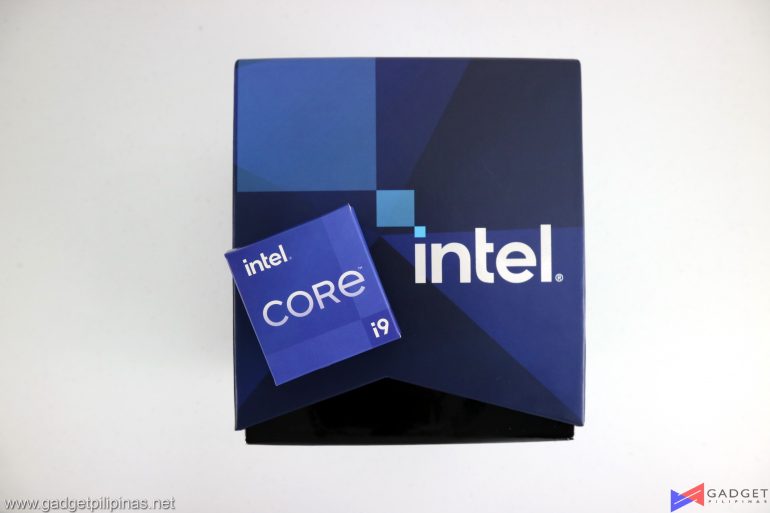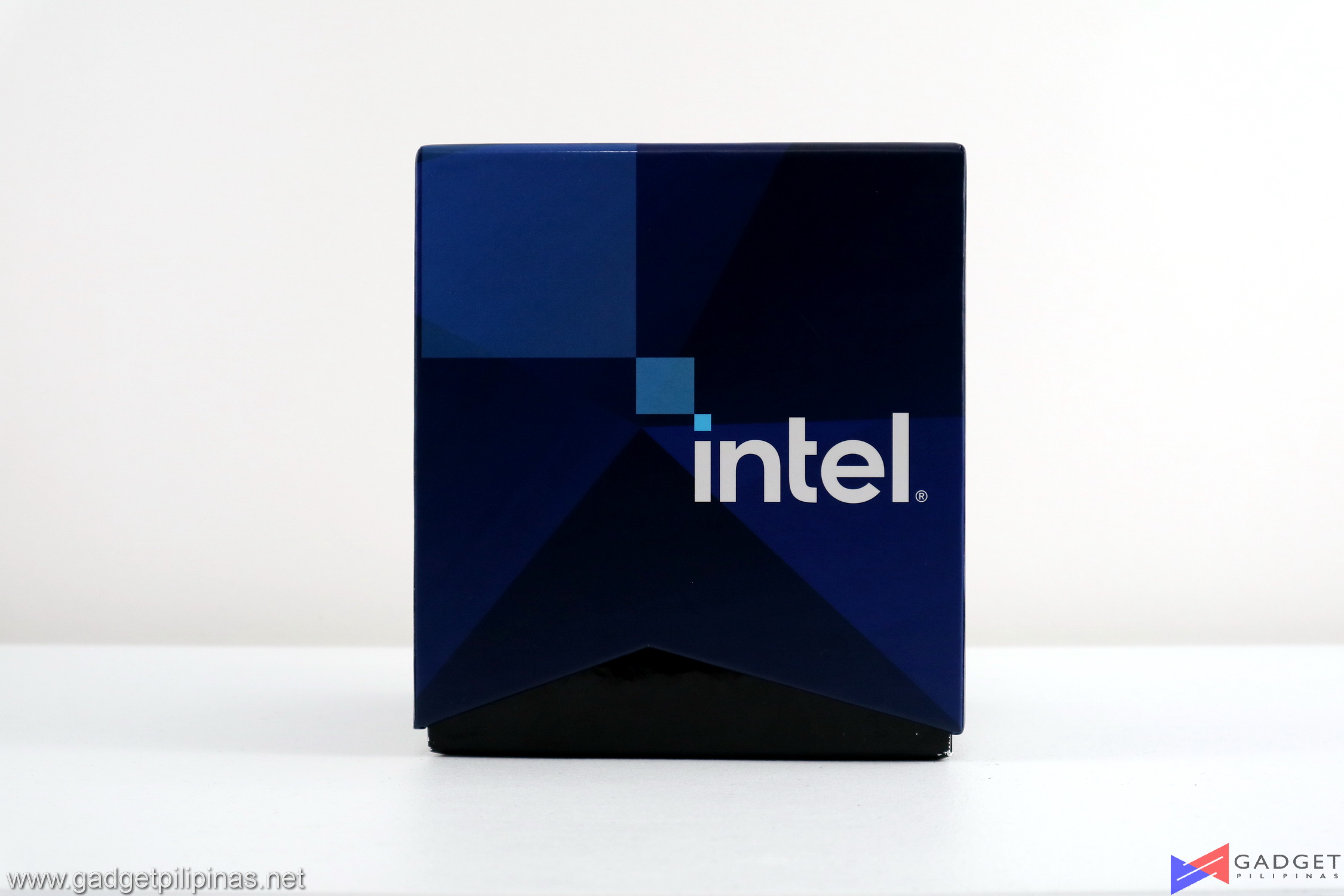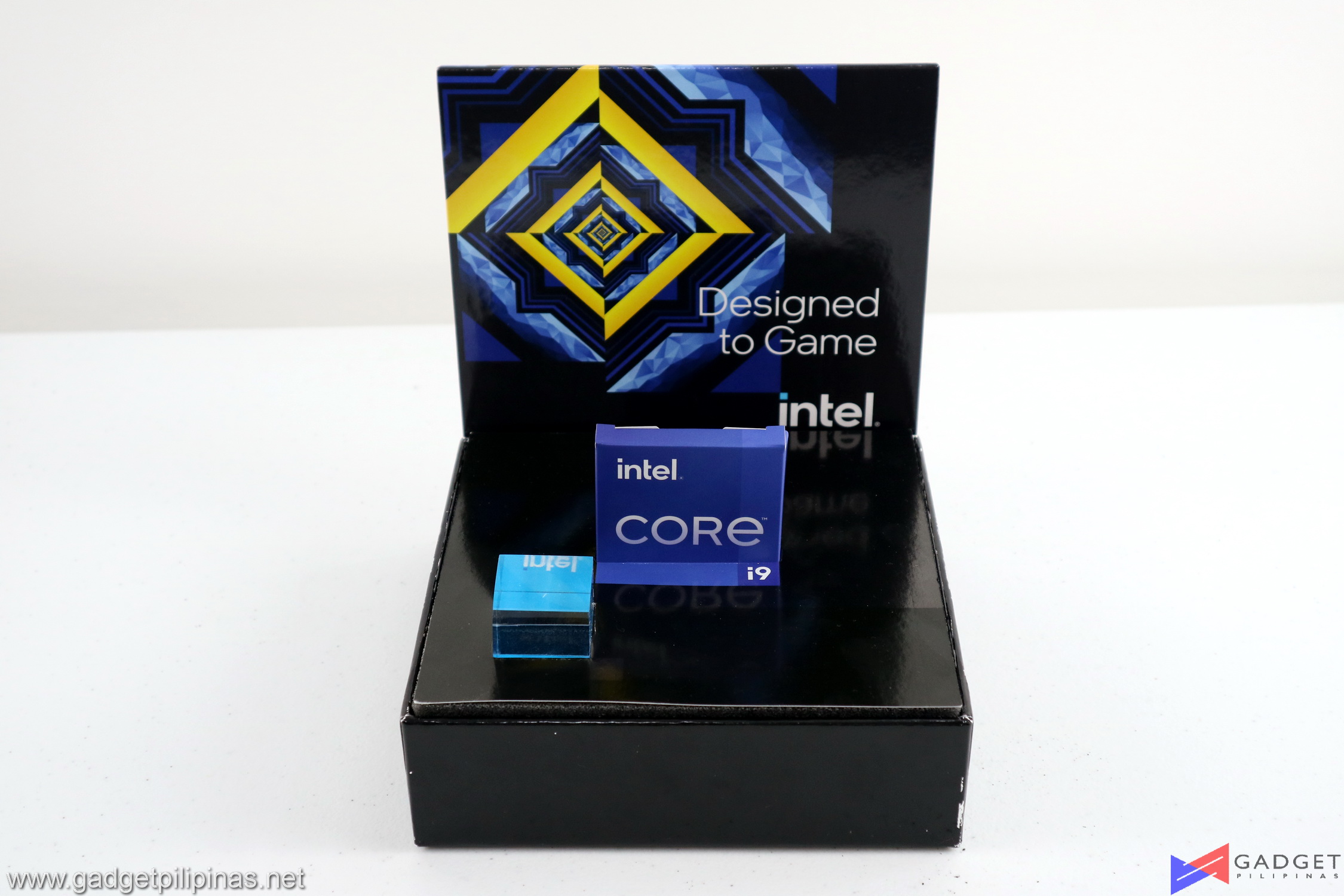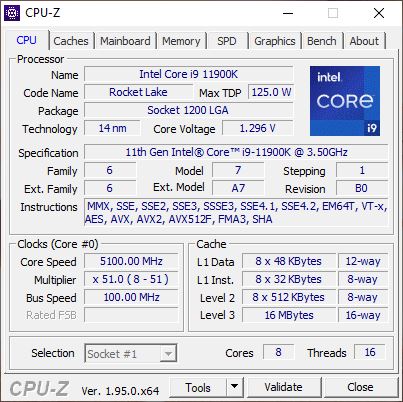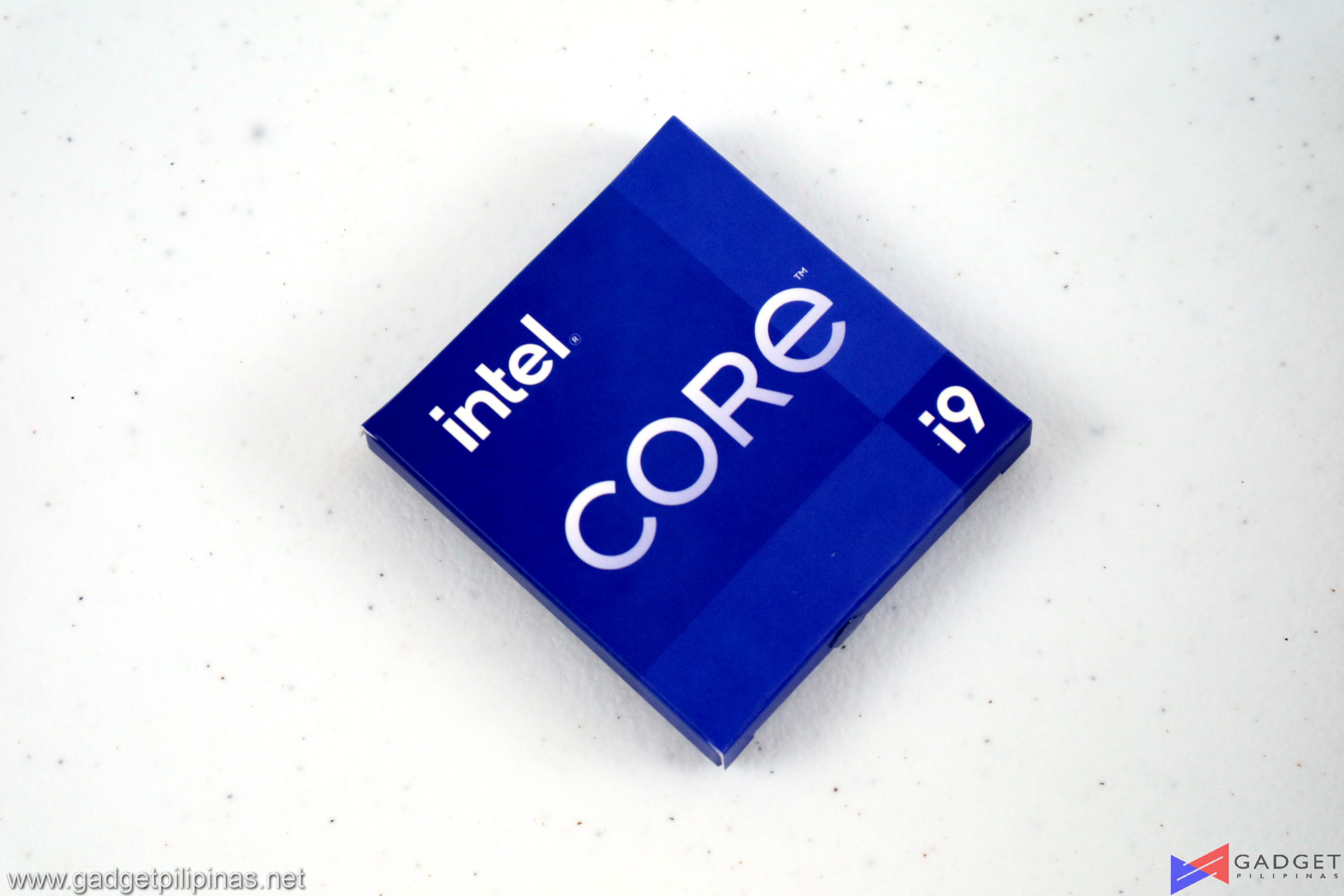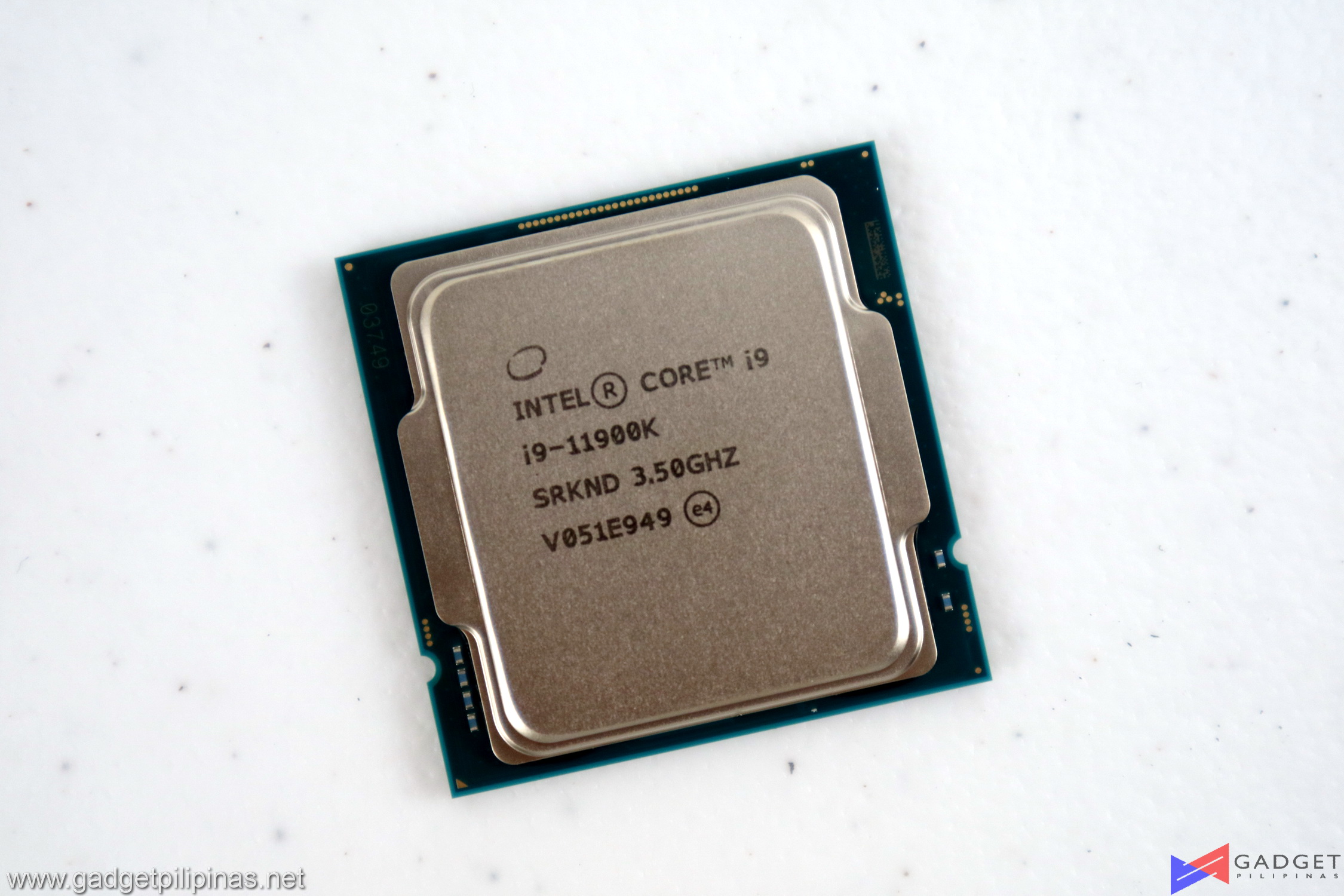Introduction – The Competition
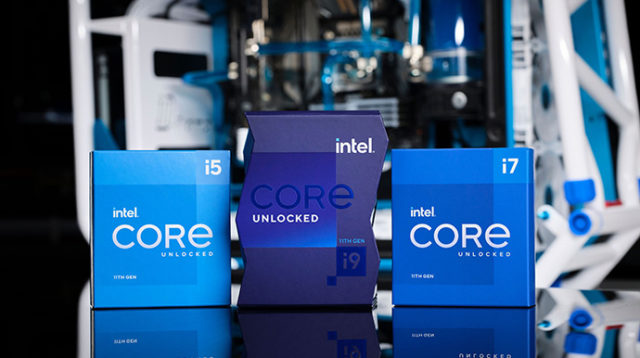 Competition in the CPU space has never been this lively since the Phenom and Core2Duo days. The heated battle between AMD Ryzen and Intel Core series processors allows the consumers to choose from a plethora of processors varying from core count, price segment, and generation. The continuation to the fierce battle between AMD and Intel lies upon the latest Ryzen 5000 series processors and the newly debuted Intel 11th gen processors. Today, we are reviewing the Intel Core i9 11900k, the flagship processor of the Rocket Lake desktop family, to see how it fits in the wide sea of CPUs that are currently dominated by AMD.
Competition in the CPU space has never been this lively since the Phenom and Core2Duo days. The heated battle between AMD Ryzen and Intel Core series processors allows the consumers to choose from a plethora of processors varying from core count, price segment, and generation. The continuation to the fierce battle between AMD and Intel lies upon the latest Ryzen 5000 series processors and the newly debuted Intel 11th gen processors. Today, we are reviewing the Intel Core i9 11900k, the flagship processor of the Rocket Lake desktop family, to see how it fits in the wide sea of CPUs that are currently dominated by AMD.
Intel 11th Gen Rocket Lake-S Overview
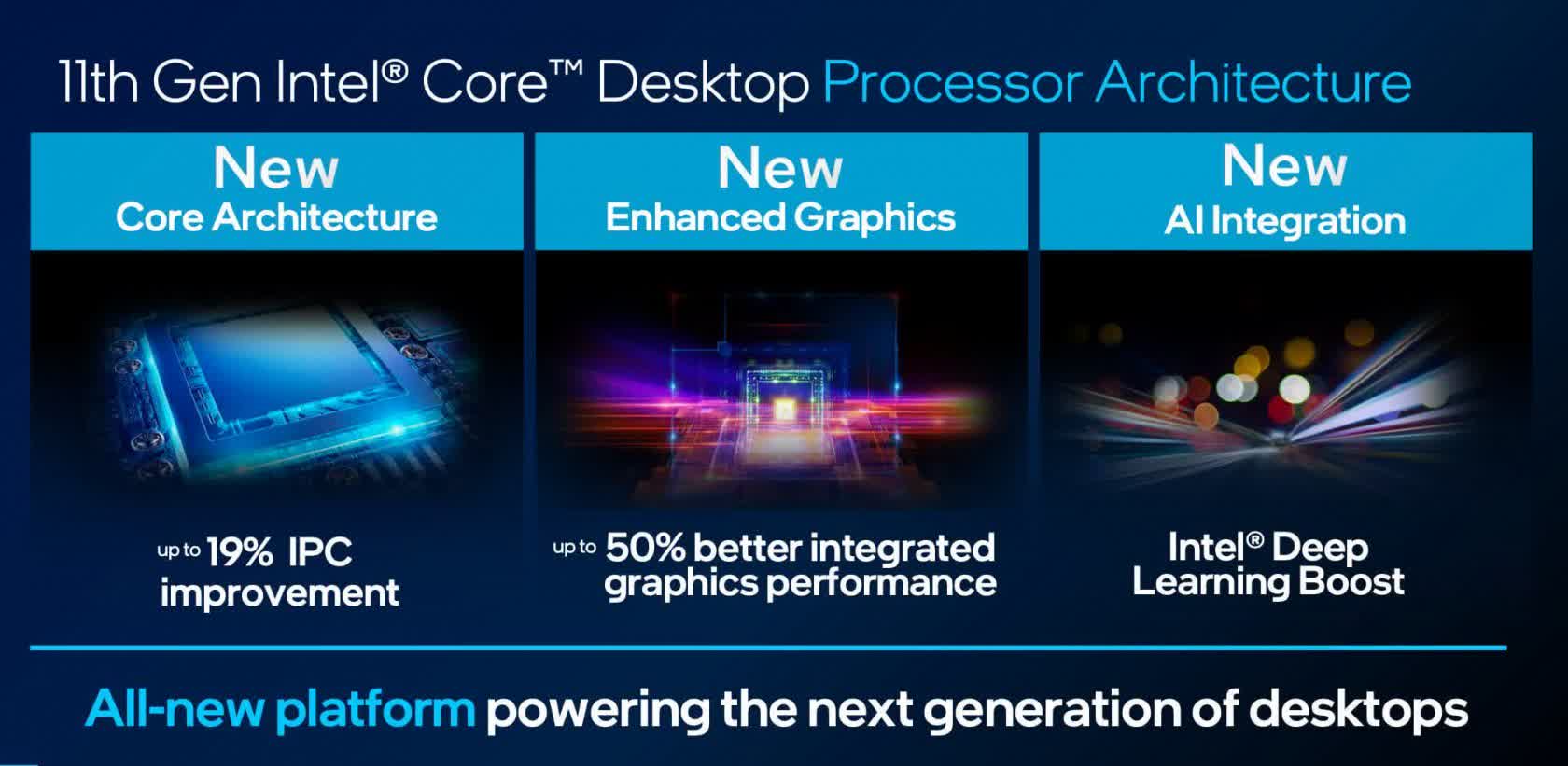 To this day, Intel has been struggling to downsize its current silicon which led the brand to continuously refine its 14-nanometer lithography. Intel recently launched its 11th Generation Tiger Lake mobile processors which we’re built under the 10nm lithography. Due to production issues and poor yields, Intel had to back-port their 10nm Cypress Cove cores(redesigned Sunny Cove cores) to 14-nanometer for it to launch to the market.
To this day, Intel has been struggling to downsize its current silicon which led the brand to continuously refine its 14-nanometer lithography. Intel recently launched its 11th Generation Tiger Lake mobile processors which we’re built under the 10nm lithography. Due to production issues and poor yields, Intel had to back-port their 10nm Cypress Cove cores(redesigned Sunny Cove cores) to 14-nanometer for it to launch to the market.
Despite backporting from 10-nanometer to 14-nanometer, the architectural improvements, one of which is the 19-percent IPC improvement compared to the previous 10th gen processors. Integrated graphics also improved by 50-percent thanks to the new XE architecture which debuted alongside Tiger Lake. Overall, the general improvements of the Rocket Lake chips such as caches and executions, are identical to the Ice Lake mobile processors.
Intel 11th Generation Processors Spec Sheet
| Processor Model | Cores/Threads | Graphics | Cache | Base clock | All-core turbo frequency | TDP | Price |
| Intel Core i9-11900K | 8/16 | Intel UHD Graphics 750 | 16MB | 3.5GHz | Up to 4.7 | 125w | $539 |
| Intel Core i9-11900KF | 8/16 | 16MB | 3.5GHz | Up to 4.7 | 125w | $513 | |
| Intel Core i9-11900 | 8/16 | Intel UHD Graphics 750 | 16MB | 2.5GHz | Up to 4.6 | 65w | $439 |
| Intel Core i9-11900F | 8/16 | 16MB | 2.5GHz | Up to 4.6 | 65w | $422 | |
| Intel Core i9-11900T | 8/16 | Intel UHD Graphics 750 | 16MB | 1.5GHz | Up to 3.7 | 35w | $439 |
| Intel Core i7-11700K | 8/16 | Intel UHD Graphics 750 | 16MB | 3.6GHz | Up to 5.0GHz | 125w | $399 |
| Intel Core i7-11700KF | 8/16 | 16MB | 3.6GHz | Up to 5.0GHz | 125w | $374 | |
| Intel Core i7-11700 | 8/16 | Intel UHD Graphics 750 | 16MB | 2.5GHz | Up to 4.9GHz | 65w | $323 |
| Intel Core i7-11700F | 8/16 | 16MB | 2.5GHz | Up to 4.9GHz | 65w | $298 | |
| Intel Core i7-11700T | 8/16 | Intel UHD Graphics 750 | 16MB | 1.4GHz | Up to 4.6GHz | 35w | $323 |
| Intel Core i5-11600K | 6/12 | Intel UHD Graphics 750 | 12MB | 3.9GHz | Up to 4.9GHz | 125w | $262 |
| Intel Core i5-11600KF | 6/12 | 12MB | 3.9GHz | Up to 4.9GHz | 125w | $237 | |
| Intel Core i5-11600 | 6/12 | Intel UHD Graphics 750 | 12MB | 2.8GHz | Up to 4.8GHz | 65w | $213 |
| Intel Core i5-11600T | 6/12 | Intel UHD Graphics 750 | 12MB | 1.7GHz | Up to 4.1GHz | 35w | $213 |
| Intel Core i5-11500 | 6/12 | Intel UHD Graphics 750 | 12MB | 2.7GHz | Up to 4.6GHz | 65w | $192 |
| Intel Core i5-11500T | 6/12 | Intel UHD Graphics 750 | 12MB | 1.5GHz | Up to 3.9GHz | 35w | $192 |
| Intel Core i5-11400 | 6/12 | Intel UHD Graphics 750 | 12MB | 2.6GHz | Up to 4.4GHz | 65w | $182 |
| Intel Core i5-11400F | 6/12 | 12MB | 2.6GHz | Up to 4.4GHz | 65w | $157 | |
| Intel Core i5-11400T | 6/12 | Intel UHD Graphics 750 | 12MB | 1.3GHz | Up to 3.7GHz | 35w | $182 |
| Intel Core i3-10325 | 4/8 | Intel UHD Graphics 630 | 8MB | 3.9GHz | Up to 4.5 | 65w | $154 |
| Intel Core i3-10305 | 4/8 | Intel UHD Graphics 630 | 8MB | 3.8GHz | Up to 4.3 | 65w | $143 |
| Intel Core i3-10305T | 4/8 | Intel UHD Graphics 630 | 8MB | 3.0GHz | Up to 3.7 | 35w | $143 |
| Intel Core i3-10105 | 4/8 | Intel UHD Graphics 630 | 8MB | 3.7GHz | Up to 4.2 | 65w | $122 |
| Intel Core i3-10105F | 4/8 | 8MB | 3.7GHz | Up to 4.2 | 65w | $182 | |
| Intel Core i3-10105T | 4/8 | Intel UHD Graphics 630 | 8MB | 3.0GHz | Up to 3.6 | 35w | $97 |
Unlike previous desktop processor launches, Intel included “T” processor variants for its 11th gen launch. “T processors” have a lower-wattage and lower performance than their standard counterparts. “F” processors, which have no integrated graphics are still in the mix as well as “K” and “KF” variants. All Core i3 processors have four-hyperthreaded cores. Core i5 and Core i7 processors still follow the last generation’s core/thread count at 6/12 and 8C/16T respectively. Surprisingly, Intel opted for an 8-core/16-thread configuration for their Core i9 lineup as opposed to 10th gen’s 10C/20T setup.
Like the previous 10th-generation Core i9 CPUs, Thermal Velocity Boost is an exclusive feature of the Core i9 processors in the Rocket Lake-S family. Thermal Velocity Boost or TVB enables a processor to achieve a higher boost clock than Max Turbo Boost for a short period, or the processor’s temperature doesn’t go over 70° celsius. TVB requires the processor to be within Power Limit 2 and under TAU. Moreover, the new 11th-gen i9 processors now come with a rated All-Core Turbo Frequency which basically guarantees a minimum all-core clock speed provided that temperatures are within the acceptable range.
Intel Core i9 11900k
The flagship of the 11th Gen desktop line is the Core i9 11900k which features a base clock 3.5Ghz with a Turbo Boost Max 3.0 frequency of 5.2Ghz. On paper, the Core i9 11900K is just a higher clocked 11700K considering they have the same core and thread count. However, as stated earlier, the i9 11900k supports TVB and All Core Turbo Frequency at 5.3Ghz and 4.7Ghz respectively.
The Intel Core i9 11900k is priced at $539 US(Php 32,000 )which is in between the Ryzen 7 5800X at Php 30,000 and Ryzen 9 5900X at Php 39,800. The Core i9 11900k is closer to the Ryzen 7 5800X as they both sport the same core and thread count compared to the 5900X’s 12C/24T setup.
Benchmark Setup and Methodology
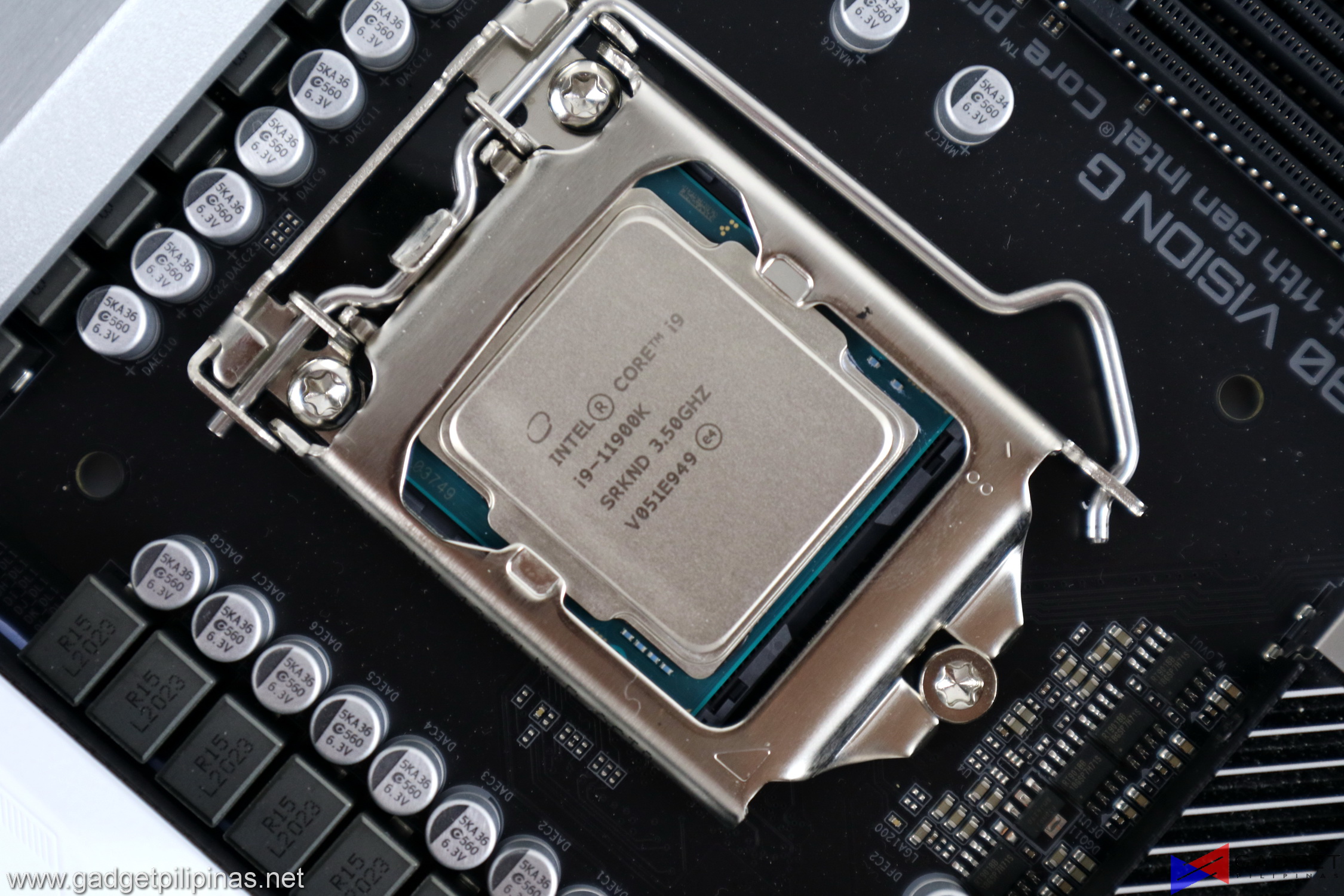 Gadget Pilipinas’ testing philosophy is to provide detail-oriented results as accurately as possible that our readers can replicate our tests given that these conditions are met. Different benchmarking apps and sequences are used depending on the component or device being tested.
Gadget Pilipinas’ testing philosophy is to provide detail-oriented results as accurately as possible that our readers can replicate our tests given that these conditions are met. Different benchmarking apps and sequences are used depending on the component or device being tested.
| Intel Core i9 11900K Review Test Bench Specs | |||
| CPU | Intel Core i9 11900K | AMD Ryzen 7 5800X | AMD Ryzen 9 5950X |
| COOLER | Corsair H100i RGB Pro XT – Noctua NT-H2 Thermal Paste | ||
| MOTHERBOARD | Gigabyte Z590 Vision G Motherboard | BIOS F4a | ASUS Crosshair VIII Hero Motherboard | |
| MEMORY | TForce XTREEM ARGB 16GB(8GBx2) 3600Mhz CL14 DDR4 | ||
| GPU | Palit RTX 3080 Gaming Pro | ||
| STORAGE | TForce CARDEA Liquid NVMe SSD | ||
| PSU | ThermalTake ToughPower 1200w Platinum | ||
| OPERATING SYSTEM | Windows 10 Pro Build 19041 | ||
| DISPLAY | Lenovo Legion Y27Q Gaming Monitor | ||
We didn’t have an i9 10900K on hand as well as the Ryzen 9 5900X. We decided to compare the Intel Core i9 11900K to the closely priced Ryzen 7 5800X as well as the flagship AMD Ryzen 9 5950X. XMP settings are set in the Z590 Vision G BIOS which is running BIOS version F4a – support for Adaptive Boost Technology.
Intel Core i9 11900K Synthetic Benchmarks
SuperPI 32M
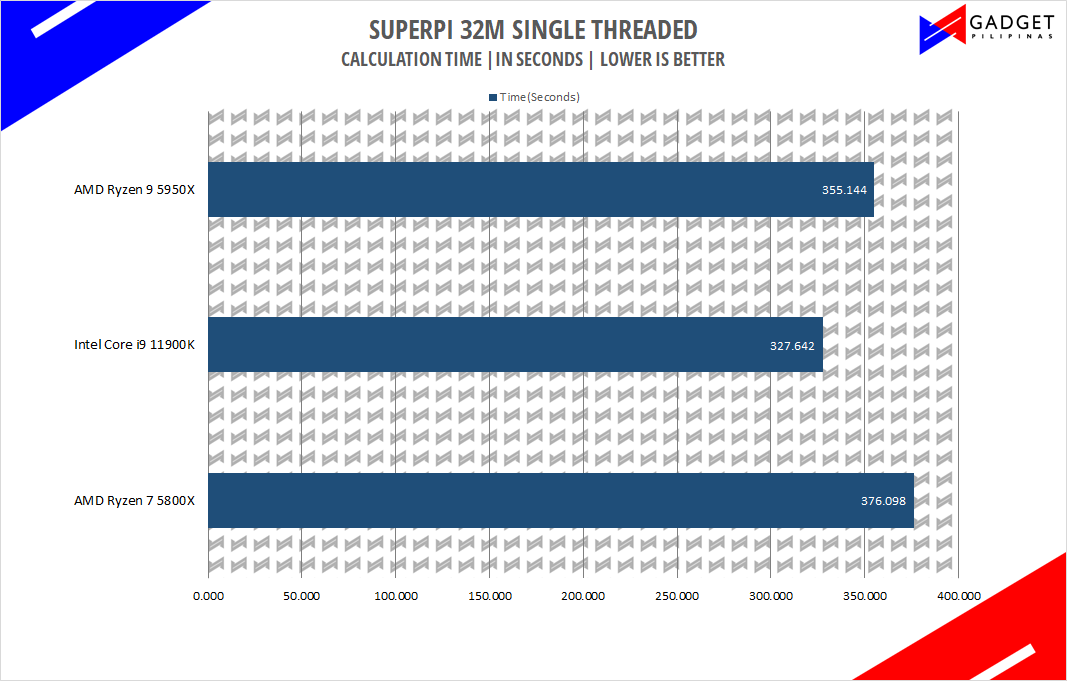 SuperPI is a single-threaded benchmark application that lets the CPU calculate Pi(π) to the nth digit. In this benchmark, we selected the Pi calculation to 32M, the highest available for the app.
SuperPI is a single-threaded benchmark application that lets the CPU calculate Pi(π) to the nth digit. In this benchmark, we selected the Pi calculation to 32M, the highest available for the app.
wPrime 1024M
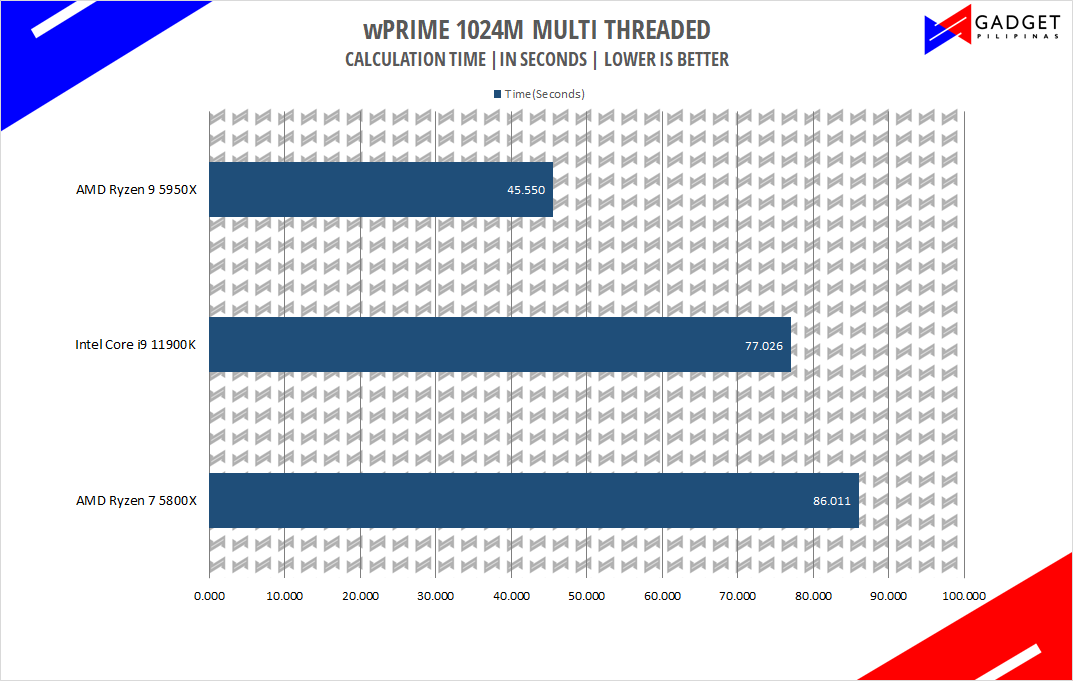 wPrime is a benchmark tool similar to SuperPI, but the former takes on finding prime numbers using Newton’s Method. The benchmark is set to calculate 1024 million prime numbers, and the performance is measured according to calculation time.
wPrime is a benchmark tool similar to SuperPI, but the former takes on finding prime numbers using Newton’s Method. The benchmark is set to calculate 1024 million prime numbers, and the performance is measured according to calculation time.
AIDA64 Memory Benchmark
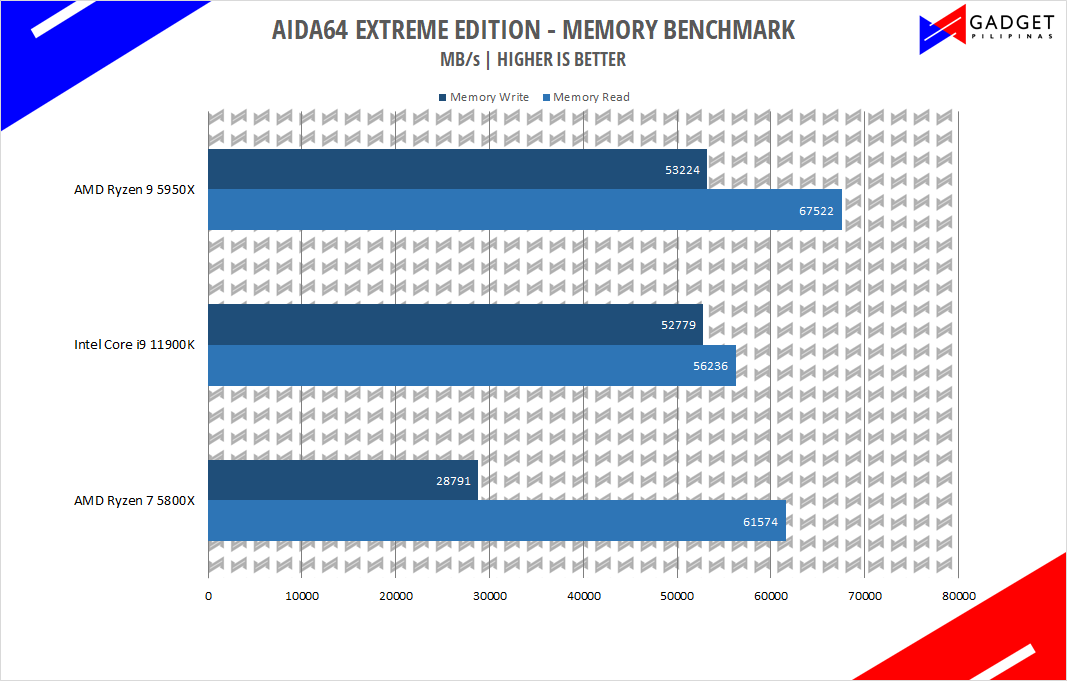 AIDA64 is a very popular and powerful monitoring tool, as well as a benchmarking application. AIDA64 is commonly used to stress test CPUs, especially testing if an overclock is stable. We used AIDA64’s Memory Benchmark to measure the data transfer bandwidth of the system memory.
AIDA64 is a very popular and powerful monitoring tool, as well as a benchmarking application. AIDA64 is commonly used to stress test CPUs, especially testing if an overclock is stable. We used AIDA64’s Memory Benchmark to measure the data transfer bandwidth of the system memory.
GeekBench 5
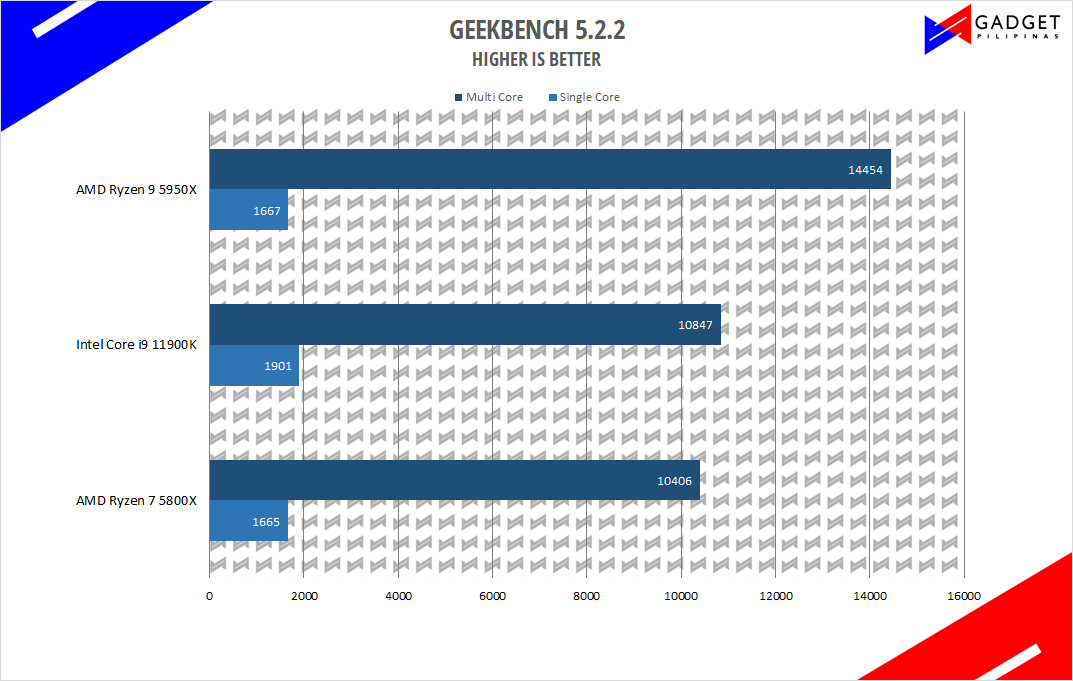 Geekbench is a multi-platform benchmark used to gauge CPU performance and compare them across Windows, Mac, and Mobile. Geekbench 5 is the latest version and doesn’t rely on memory than the previous Geekbench 4, making it a great tool to measure both single-core and multi-core CPU performance.
Geekbench is a multi-platform benchmark used to gauge CPU performance and compare them across Windows, Mac, and Mobile. Geekbench 5 is the latest version and doesn’t rely on memory than the previous Geekbench 4, making it a great tool to measure both single-core and multi-core CPU performance.
CINEBENCH
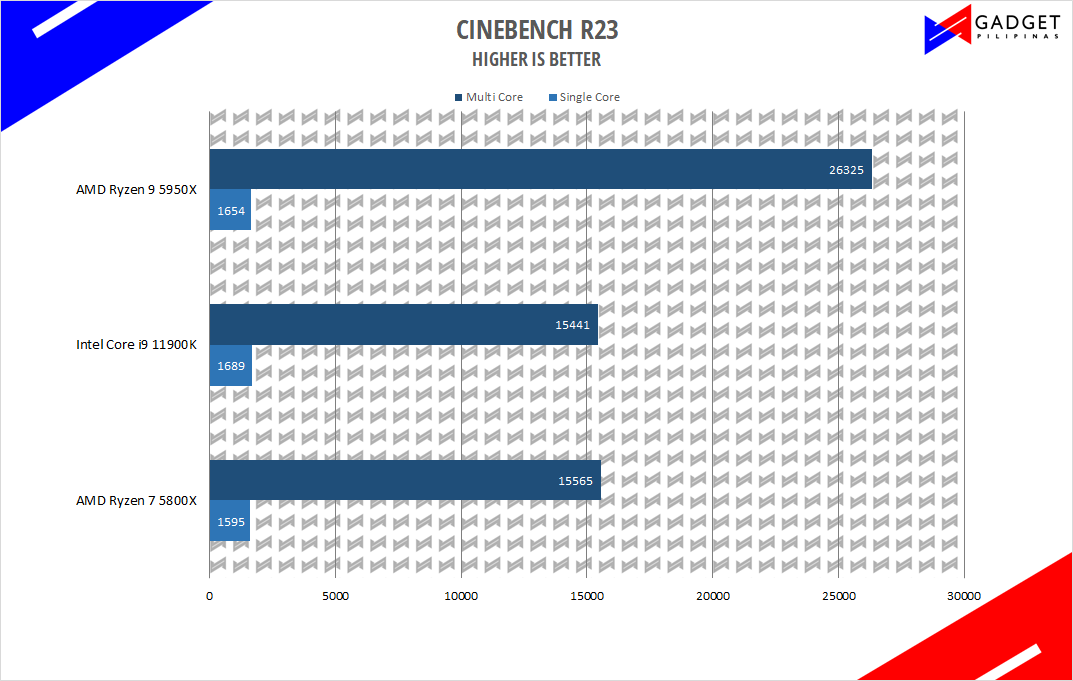 Maxon’s Cinebench benchmark is one of the most iconic benchmark applications used by reviewers and enthusiasts. The latest Cinebench R23 uses the latest rendering architectures, including Intel’s Embree ray tracing technology and other advanced features from AMD and Intel that allow users to render the same scene on the same hard. Cinebench R20 uses a larger and more complex testing scene than Cinebench R15 by about 8x computational power and requires 4x the memory.
Maxon’s Cinebench benchmark is one of the most iconic benchmark applications used by reviewers and enthusiasts. The latest Cinebench R23 uses the latest rendering architectures, including Intel’s Embree ray tracing technology and other advanced features from AMD and Intel that allow users to render the same scene on the same hard. Cinebench R20 uses a larger and more complex testing scene than Cinebench R15 by about 8x computational power and requires 4x the memory.
GOOGLE OCTANE 2.0
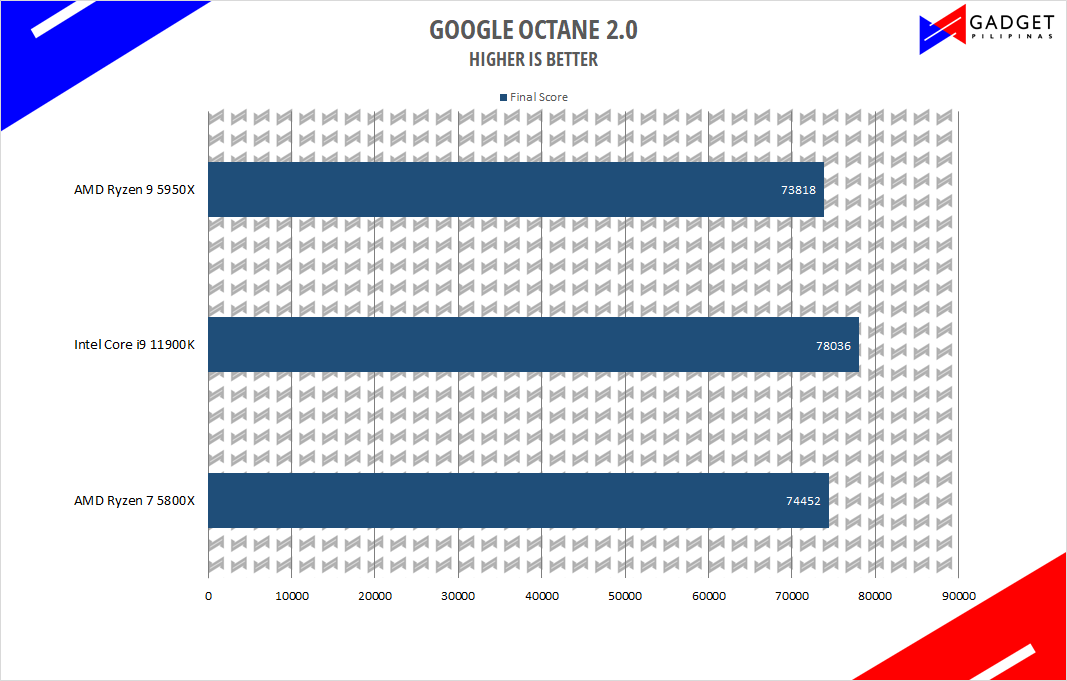 Google Octane 2.0 is a benchmark that measures a Javascript engine’s performance by running multiple tests representing different use cases of JavaScript applications. While Google Octane is retired and no longer maintained, it is still a good representation of today’s dynamic, interactive web applications. Our Google Octane 2.0 is run on Microsoft’s latest Chromium-based Edge browser.
Google Octane 2.0 is a benchmark that measures a Javascript engine’s performance by running multiple tests representing different use cases of JavaScript applications. While Google Octane is retired and no longer maintained, it is still a good representation of today’s dynamic, interactive web applications. Our Google Octane 2.0 is run on Microsoft’s latest Chromium-based Edge browser.
V-RAY
 Ray Benchmark is a stand-alone version V-Ray developed by Chaos Group. It is designed to test the CPU and GPU by rendering sample scenes at a fixed amount of time. V-Ray is a plug-in mostly utilized by 3D computer graphics software applications mainly for industrial design, product design, architecture, film, and video game production. V-Ray is not limited to 64-threads as it supports multi and mega-threading.
Ray Benchmark is a stand-alone version V-Ray developed by Chaos Group. It is designed to test the CPU and GPU by rendering sample scenes at a fixed amount of time. V-Ray is a plug-in mostly utilized by 3D computer graphics software applications mainly for industrial design, product design, architecture, film, and video game production. V-Ray is not limited to 64-threads as it supports multi and mega-threading.
HWBOT x265
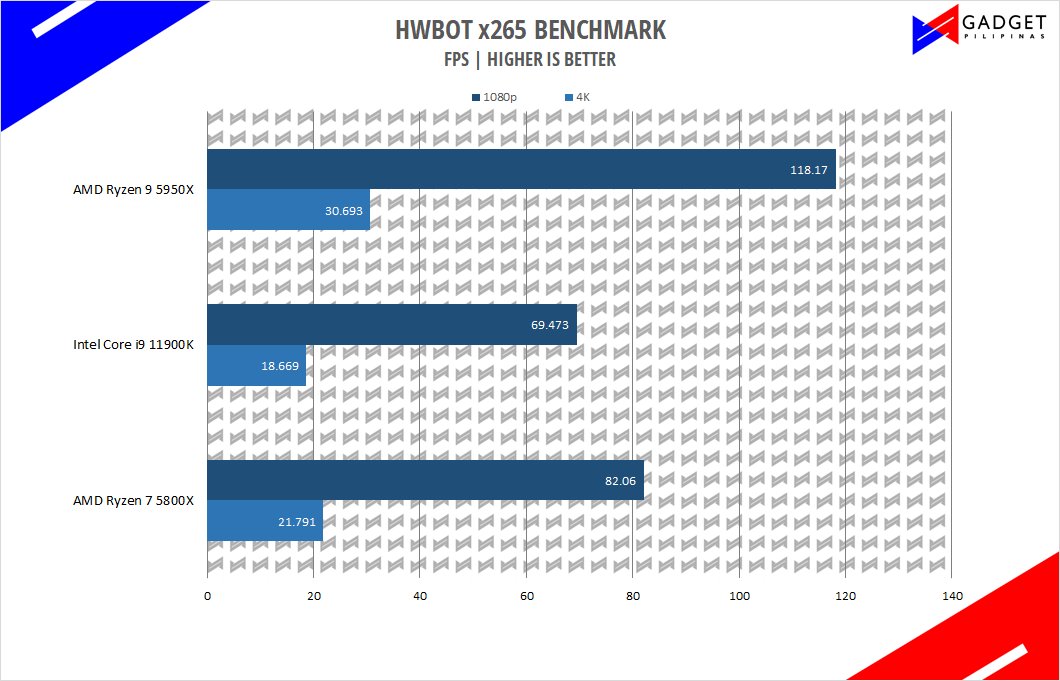 HWBOT x265, developed by Czech overclocker Havli, is a multi-threaded application that takes advantage of modern CPU instruction sets with support for older CPUs. HWBOT x265 benchmark uses the x265/HEVC encoder that renders a video in 1080p or 4K resolution.
HWBOT x265, developed by Czech overclocker Havli, is a multi-threaded application that takes advantage of modern CPU instruction sets with support for older CPUs. HWBOT x265 benchmark uses the x265/HEVC encoder that renders a video in 1080p or 4K resolution.
HANDBRAKE
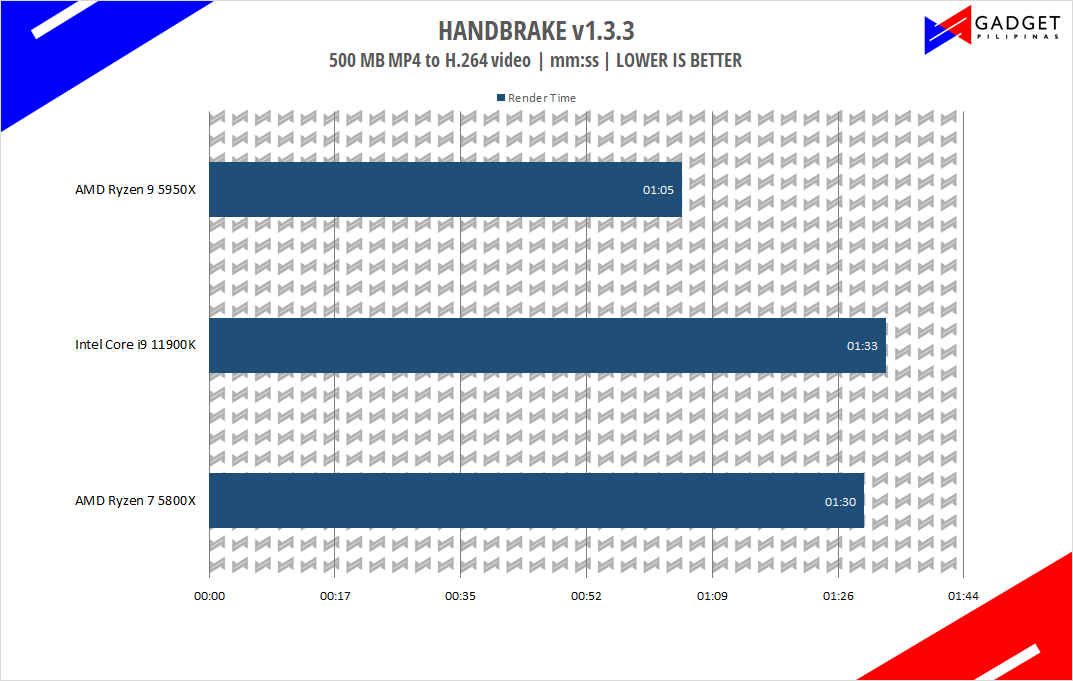 Handbrake is a top-rated open-source video conversion software that is used by professionals, enthusiasts, and even reviewers as a reference point mainly because of its wide variety of media codecs. The rise of streaming and blogging makes video content, both encoding, and transcoding important for these people, regardless if they’re seasoned professionals or just starting out. Handbrake also takes advantage of AVX-512 and OpenCL to accelerate certain types of media codecs. Our Handbrake benchmark converts a 500MB MP4 video to H.264 to measure the processor’s performance.
Handbrake is a top-rated open-source video conversion software that is used by professionals, enthusiasts, and even reviewers as a reference point mainly because of its wide variety of media codecs. The rise of streaming and blogging makes video content, both encoding, and transcoding important for these people, regardless if they’re seasoned professionals or just starting out. Handbrake also takes advantage of AVX-512 and OpenCL to accelerate certain types of media codecs. Our Handbrake benchmark converts a 500MB MP4 video to H.264 to measure the processor’s performance.
BLENDER
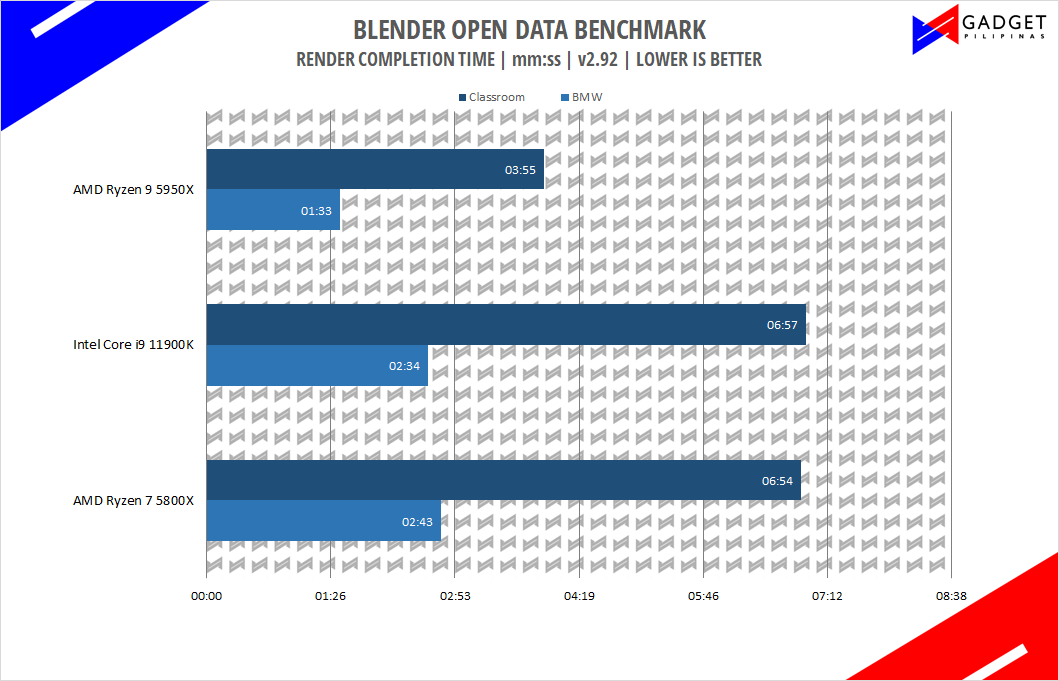 Blender is a widely used, free, open-source 3D creation suite. It supports the whole 3D pipeline process from modeling, rigging, animation, simulation, rendering, and even motion tracking. Blender has become a standard for CPU benchmarks with the BMW27 and Classroom scene most used. This prompted the company to release Blender Open Data Benchmark in 2018, a benchmark-specific version that allows users to run a preset benchmark and share the results online similar to 3D Mark.
Blender is a widely used, free, open-source 3D creation suite. It supports the whole 3D pipeline process from modeling, rigging, animation, simulation, rendering, and even motion tracking. Blender has become a standard for CPU benchmarks with the BMW27 and Classroom scene most used. This prompted the company to release Blender Open Data Benchmark in 2018, a benchmark-specific version that allows users to run a preset benchmark and share the results online similar to 3D Mark.
CORONA RENDERER
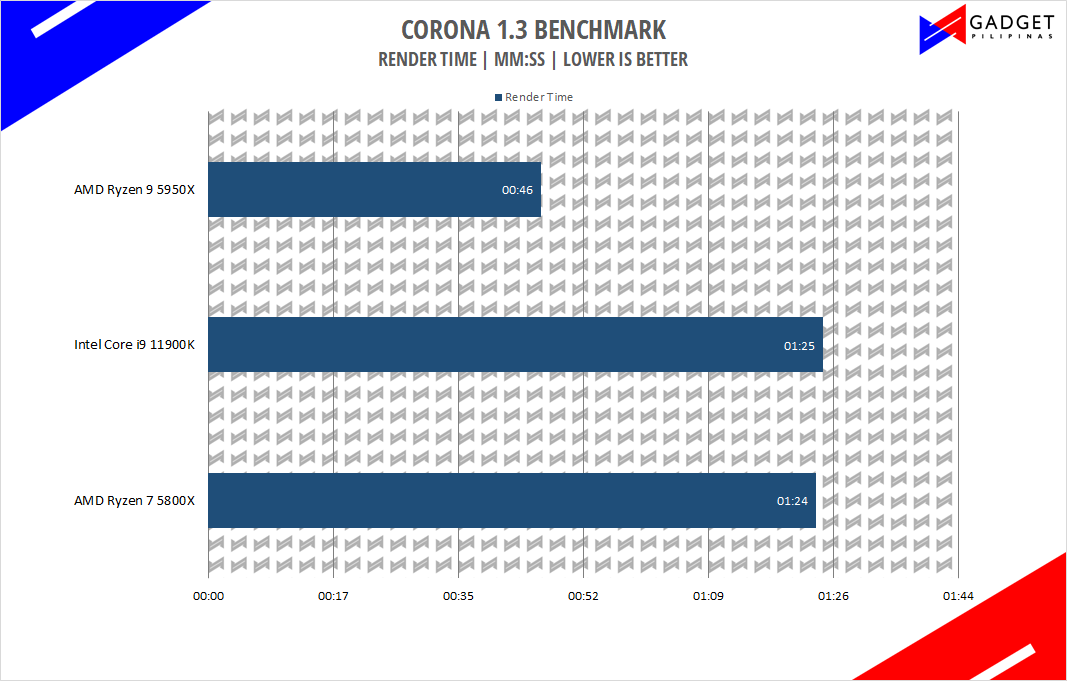 Corona Renderer is an unbiased photorealistic render available for Autodesk 3Ds Max, Maxon Cinema 4D, and as a stand-alone application. Its popularity, similar to Blender, led Chaos Group to develop a benchmark version of the app which runs using Corona Renderer 1.3. Workstation systems, especially CPUs, can utilize Corona Benchmark as up to 72 threads can be used in the benchmark, making it very suitable for CPUs with various price segments.
Corona Renderer is an unbiased photorealistic render available for Autodesk 3Ds Max, Maxon Cinema 4D, and as a stand-alone application. Its popularity, similar to Blender, led Chaos Group to develop a benchmark version of the app which runs using Corona Renderer 1.3. Workstation systems, especially CPUs, can utilize Corona Benchmark as up to 72 threads can be used in the benchmark, making it very suitable for CPUs with various price segments.
PCMark10
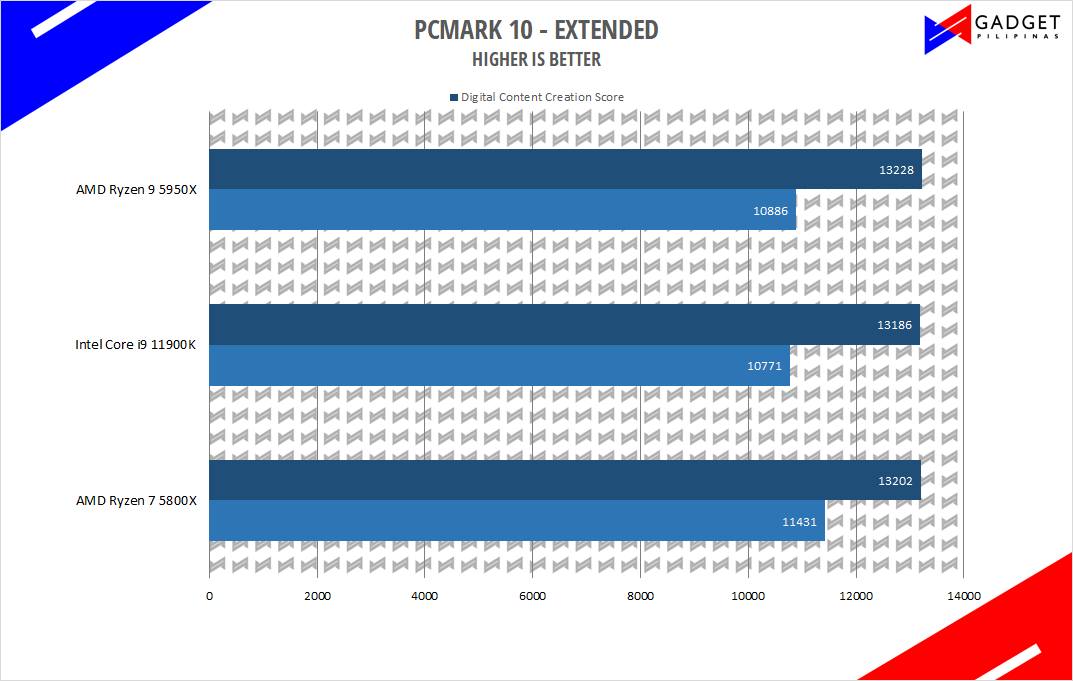 From the same developers of the popular game benchmarking tool 3DMark, PCMark 10 is a benchmarking app for measure a whole PC’s performance. It covers a wide variety of tests to reflect common tasks performed in a modern workplace. We selected PCMark 10’s extended benchmark and reported both the overall score and Digital Content Creation Score.
From the same developers of the popular game benchmarking tool 3DMark, PCMark 10 is a benchmarking app for measure a whole PC’s performance. It covers a wide variety of tests to reflect common tasks performed in a modern workplace. We selected PCMark 10’s extended benchmark and reported both the overall score and Digital Content Creation Score.
3DMark
- Intel Core i9 11900K Review 3DMark Firestrike Benchmark
- Intel Core i9 11900K Review 3DMark Firestrike Benchmark
- Intel Core i9 11900K Review 3DMark TimeSpy Benchmark
- Intel Core i9 11900K Review 3DMark TimeSpy Benchmark
3DMark is the go-to benchmark for gamers because of the ability to share and compare results online. Firestrike and Time Spy are used to measure DX 11 and DX 12 performance respectively.
Intel Core i9 11900K Gaming Benchmarks
DOTA 2

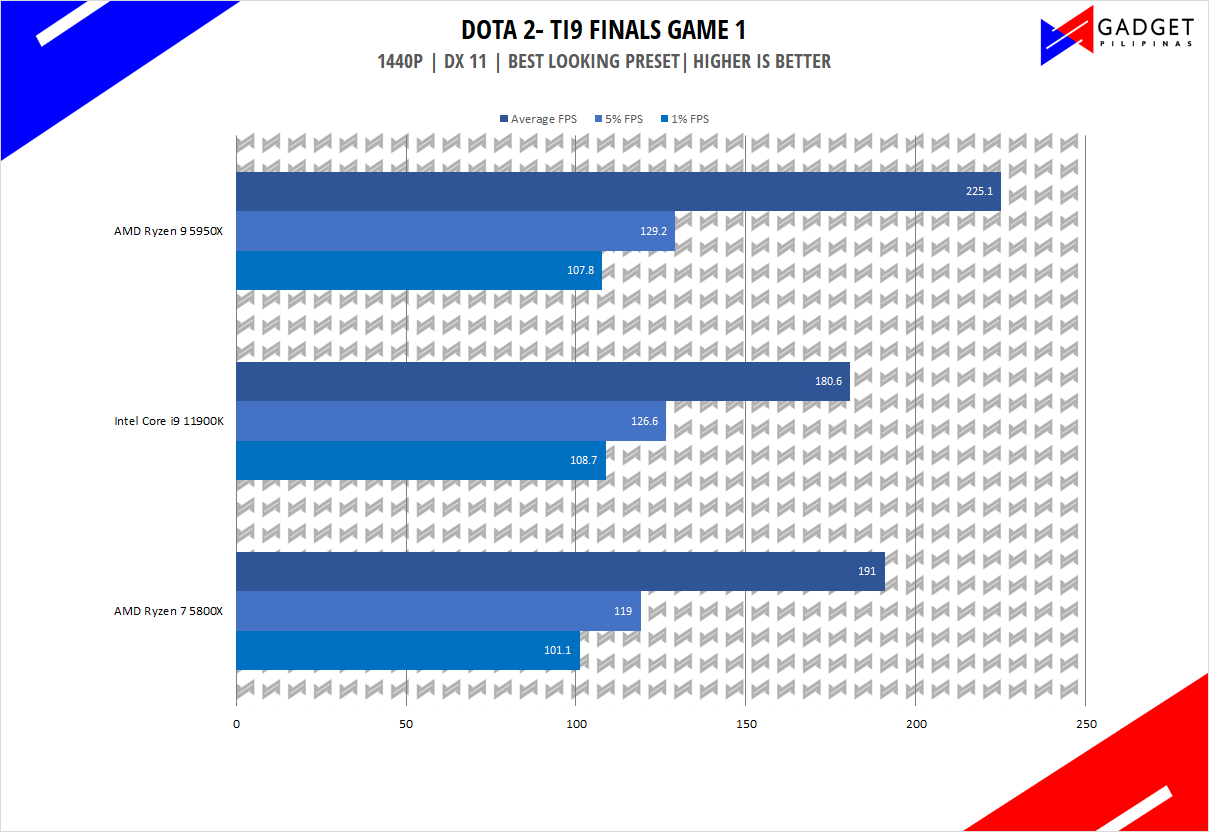
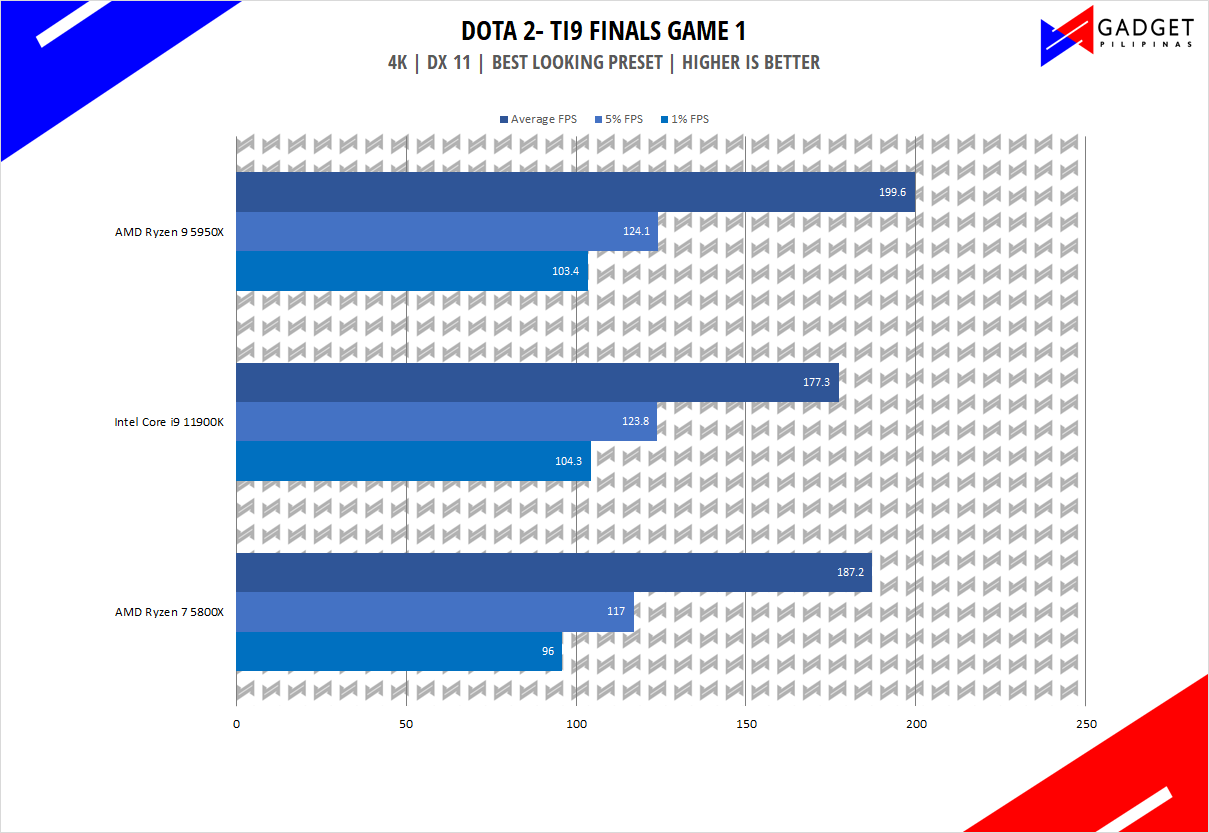 Most gamers play at least one of the following free-to-play titles: League of Legends, CS: GO, Dota 2, and/or Fortnite. Dota 2 is a good representation of the F2P titles as it is the most demanding game in the spectrum. The benchmark will give you an idea of the graphic card’s relative performance on other lesser demanding titles. Our benchmark sequence is based on a replay of OG vs. Liquid in the TI9 grand finals from the team fight that happened on 28:30 to 29:30.
Most gamers play at least one of the following free-to-play titles: League of Legends, CS: GO, Dota 2, and/or Fortnite. Dota 2 is a good representation of the F2P titles as it is the most demanding game in the spectrum. The benchmark will give you an idea of the graphic card’s relative performance on other lesser demanding titles. Our benchmark sequence is based on a replay of OG vs. Liquid in the TI9 grand finals from the team fight that happened on 28:30 to 29:30.
Far Cry 5

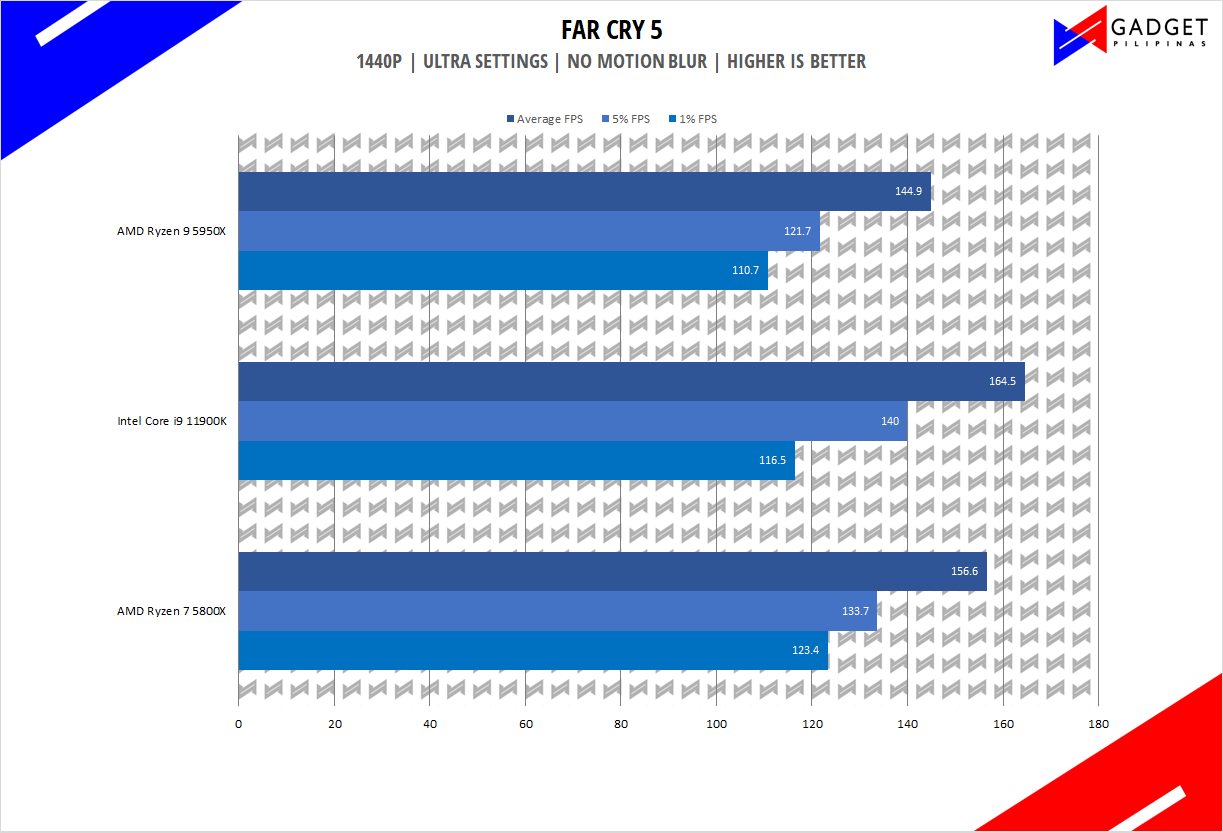
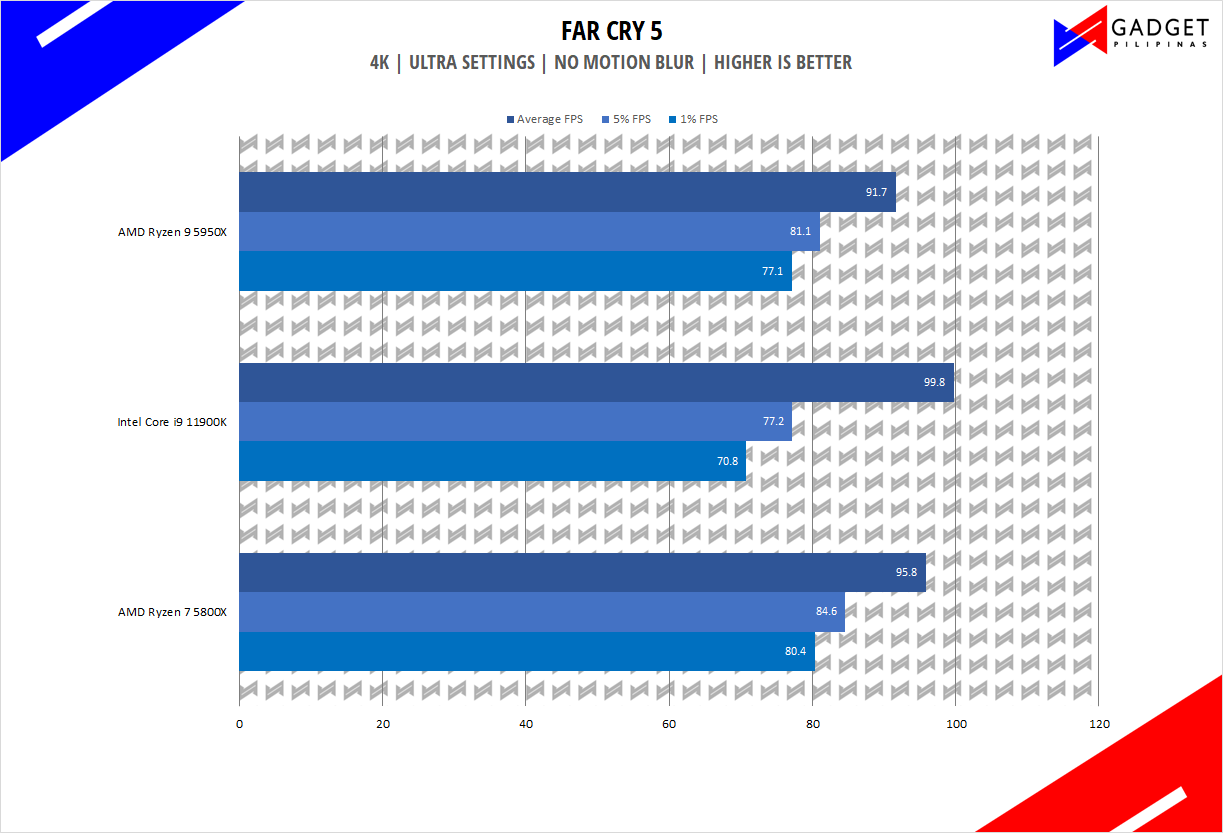 FarCry 5 is an FPS game published by Ubisoft and uses the Dunia engine. It heavily relies on and takes advantage of DirectX 11 to render a realistic environment that makes it taxing to both the CPU and GPU.
FarCry 5 is an FPS game published by Ubisoft and uses the Dunia engine. It heavily relies on and takes advantage of DirectX 11 to render a realistic environment that makes it taxing to both the CPU and GPU.
Rainbow Six Siege
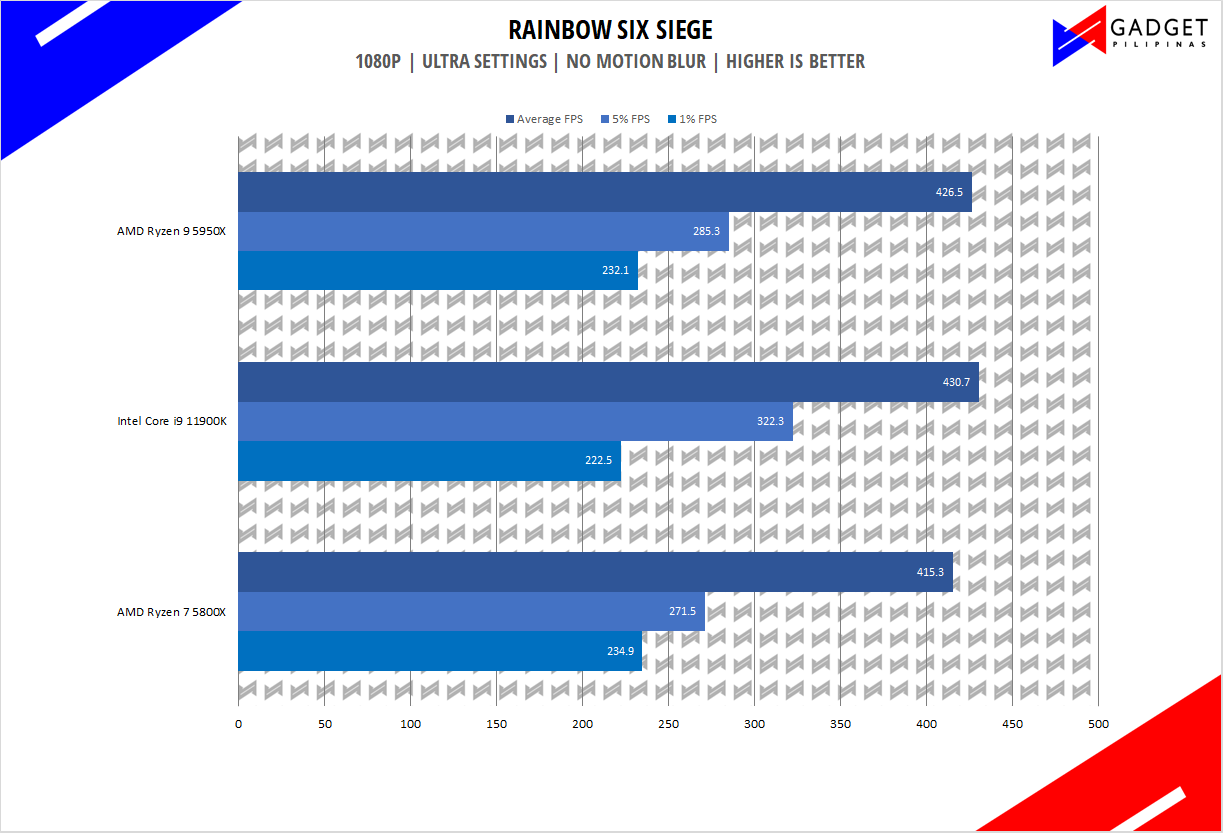
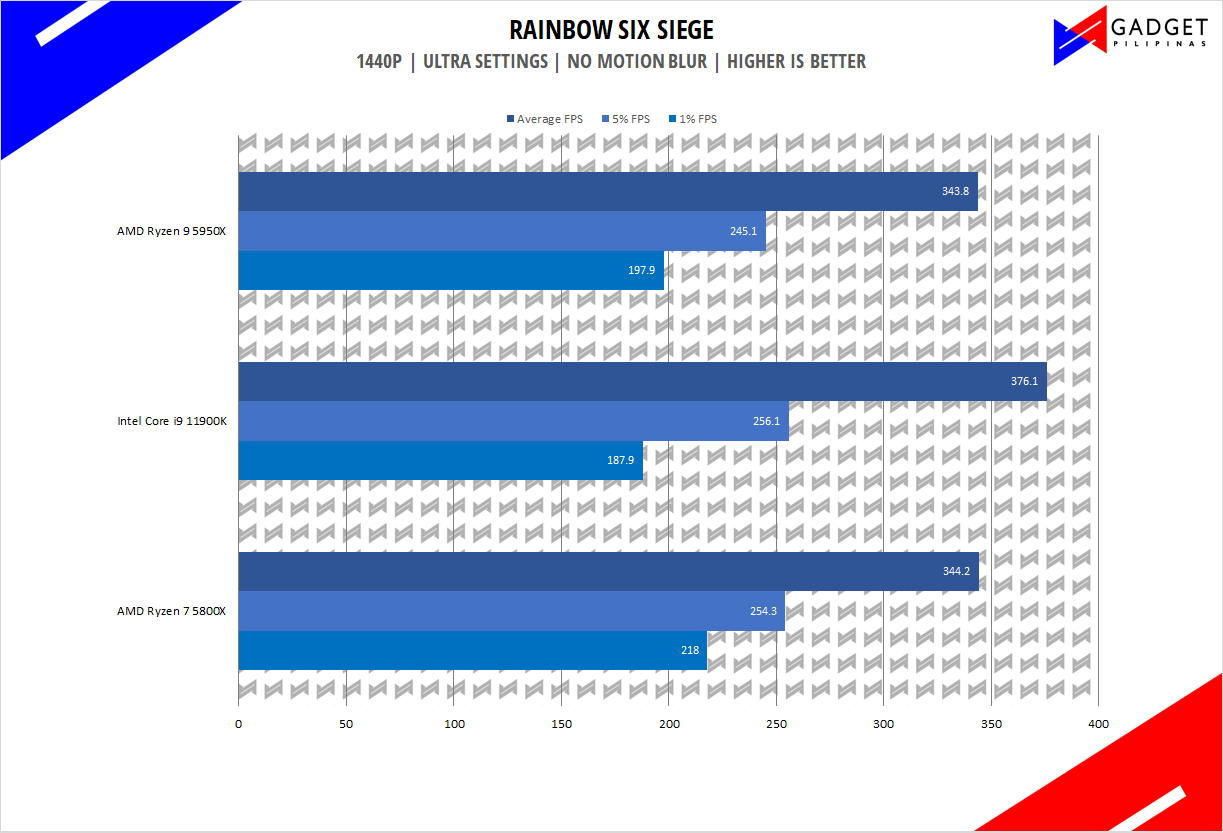
 Rainbow Six Seige is one of the few popular AAA games that’s still popular in 2021 due to its competitive gameplay mechanics. R6S uses the AnvilNext game engine, which is developed by the game’s publisher, Ubisoft. As of writing, Rainbow Six Siege is currently the most popular Tom Clancy title beating out Wildlands, Breakpoint and even, Division 2. Rainbow Six Seige is one of the few popular AAA games that’s still popular in 2019 due to its competitive gameplay mechanics. R6S uses the AnvilNext game engine, which is developed by the game’s publisher, Ubisoft. As of writing, Rainbow Six Siege is currently the most popular Tom Clancy title beating out Wildlands, Breakpoint and even, Division 2.
Rainbow Six Seige is one of the few popular AAA games that’s still popular in 2021 due to its competitive gameplay mechanics. R6S uses the AnvilNext game engine, which is developed by the game’s publisher, Ubisoft. As of writing, Rainbow Six Siege is currently the most popular Tom Clancy title beating out Wildlands, Breakpoint and even, Division 2. Rainbow Six Seige is one of the few popular AAA games that’s still popular in 2019 due to its competitive gameplay mechanics. R6S uses the AnvilNext game engine, which is developed by the game’s publisher, Ubisoft. As of writing, Rainbow Six Siege is currently the most popular Tom Clancy title beating out Wildlands, Breakpoint and even, Division 2.
Cyberpunk 2077
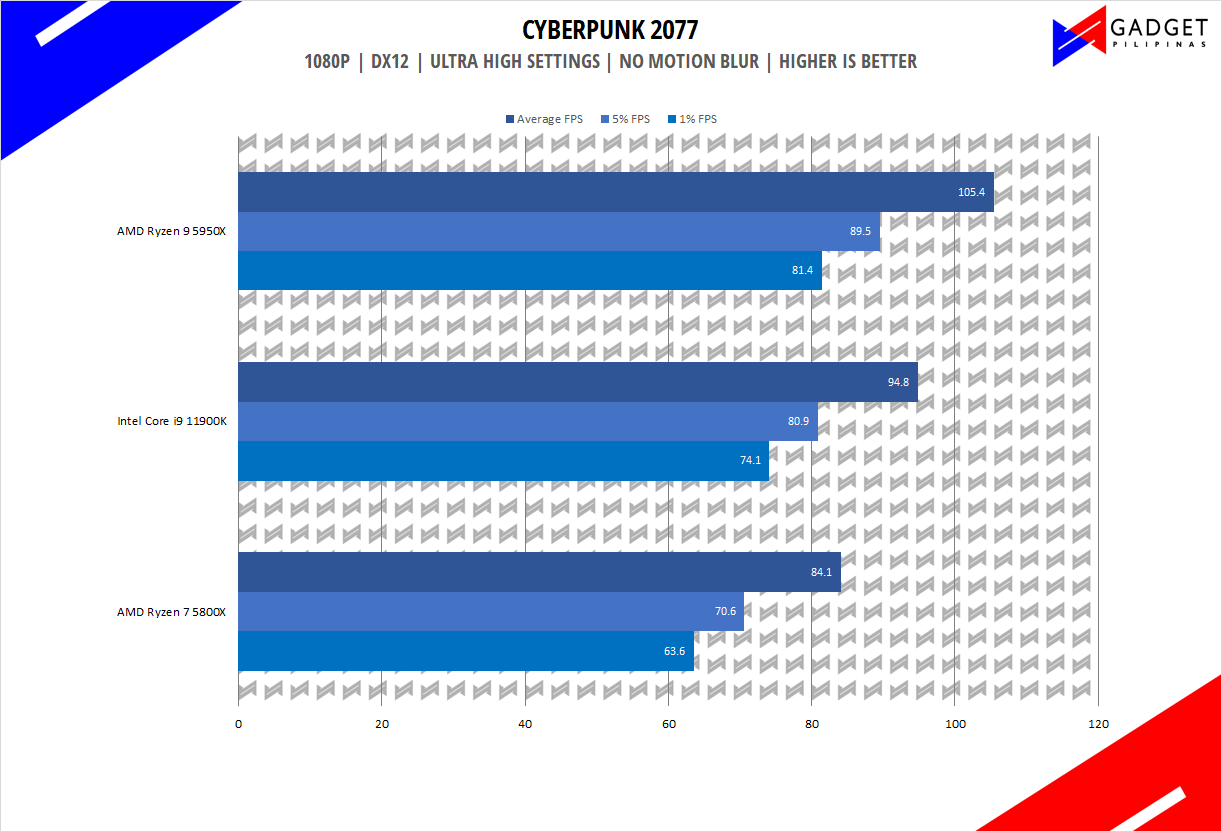
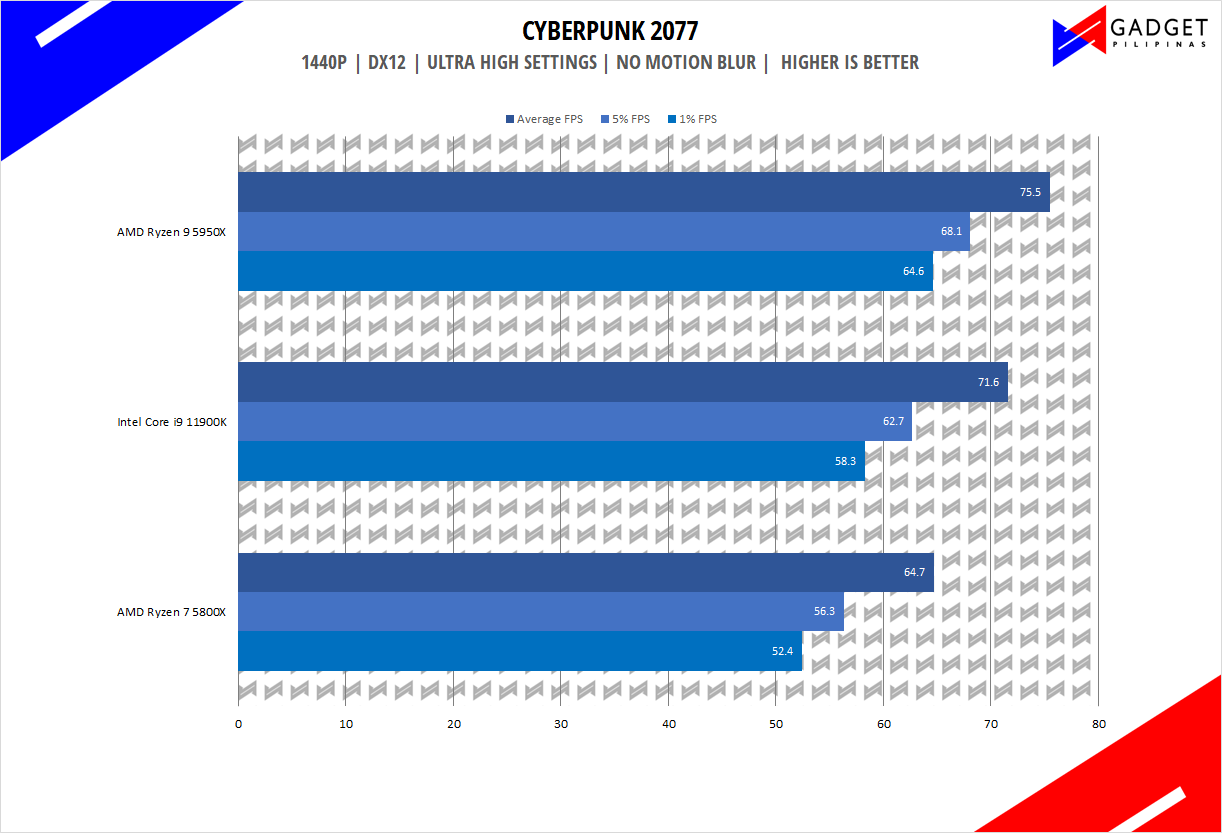
 Cyberpunk 2077 is arguably the most hyped game of 2020. Developed by CD Projekt Red, the dystopian open-world, action-adventure RPG sports is one of the most demanding titles to date. Cyberpunk 2077 also supports three Ray Tracing settings as well as DLSS which makes the game a great tool to measure Ray tracing performance for both AMD and Nvidia graphics cards.
Cyberpunk 2077 is arguably the most hyped game of 2020. Developed by CD Projekt Red, the dystopian open-world, action-adventure RPG sports is one of the most demanding titles to date. Cyberpunk 2077 also supports three Ray Tracing settings as well as DLSS which makes the game a great tool to measure Ray tracing performance for both AMD and Nvidia graphics cards.
Horizon Zero Dawn
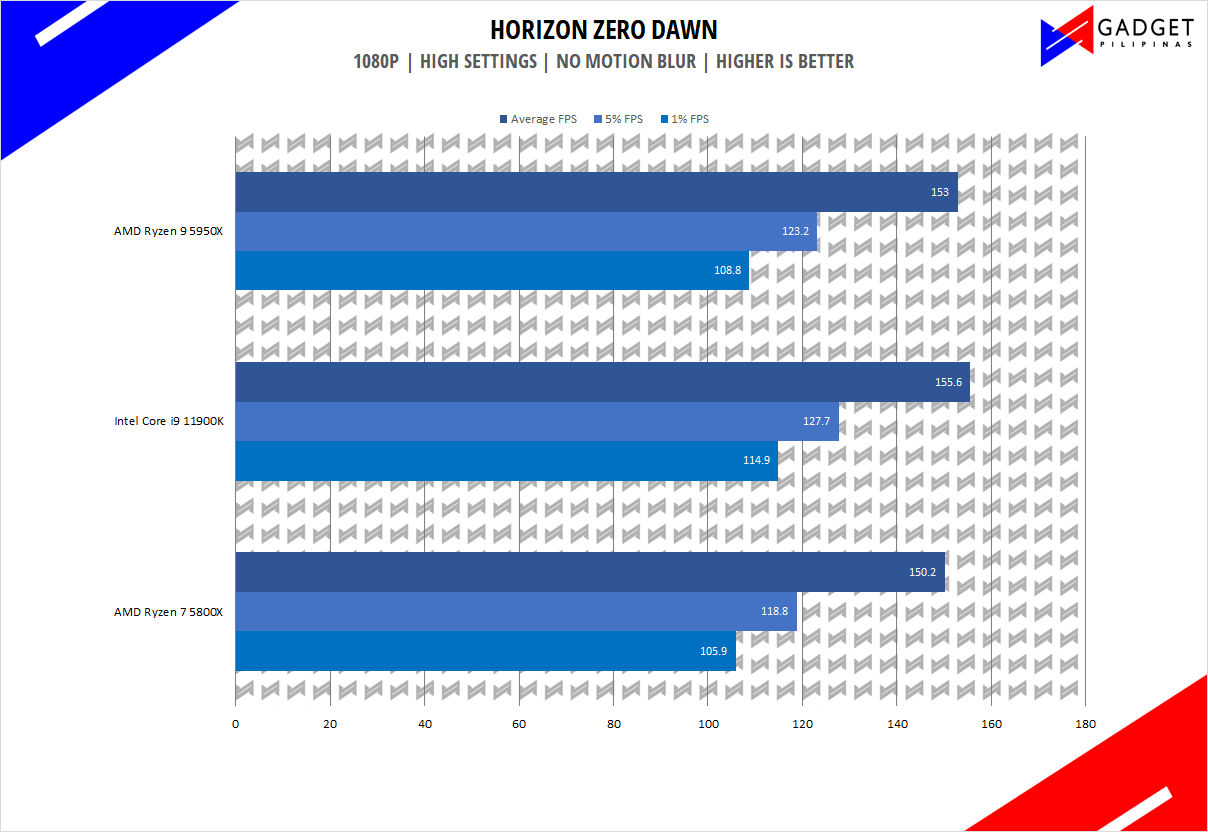

 Horizon Zero Dawn is one of the most popular console-port RPG developed by Guerilla Games and published by Sony Interactive Entertainment. Horizon Zero Dawn is a multi-award-winning action RPG and its popularity resulted in an exclusive Complete Edition game bundle in Steam.
Horizon Zero Dawn is one of the most popular console-port RPG developed by Guerilla Games and published by Sony Interactive Entertainment. Horizon Zero Dawn is a multi-award-winning action RPG and its popularity resulted in an exclusive Complete Edition game bundle in Steam.
Shadow of The Tomb Raider
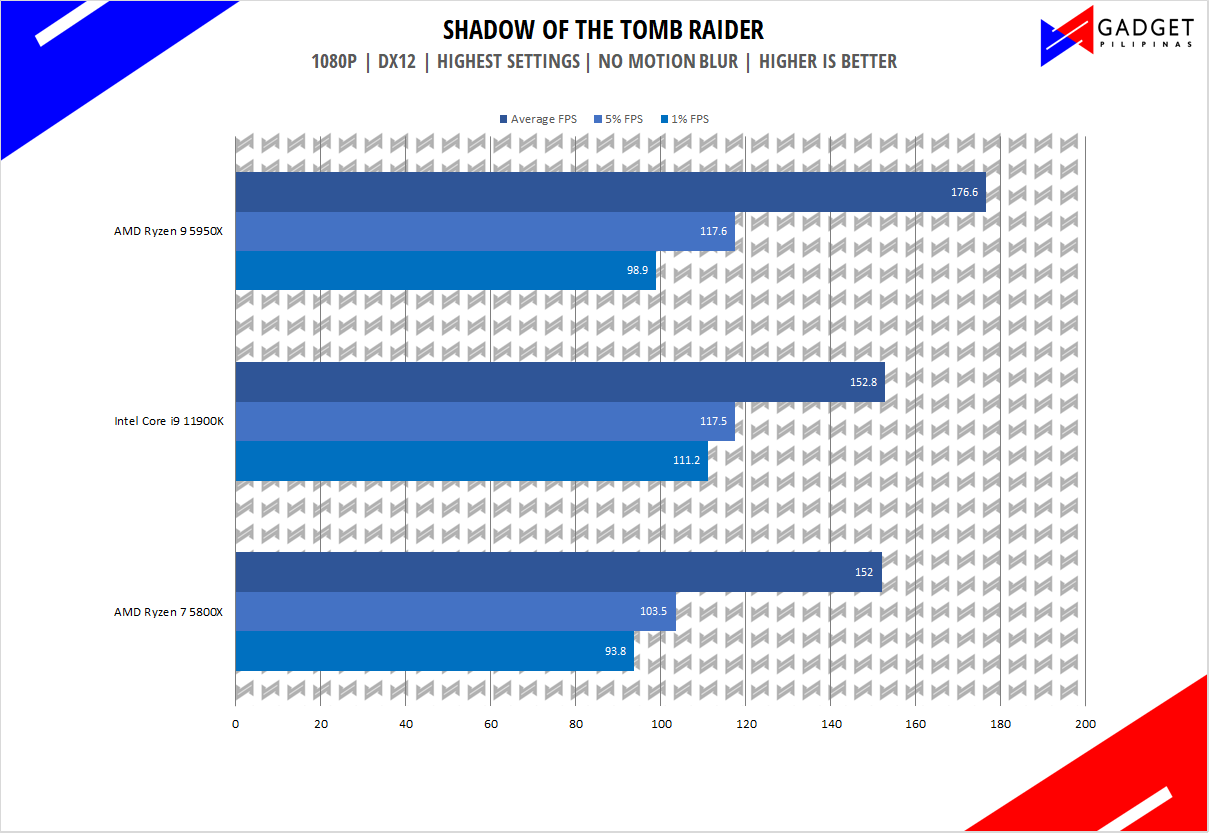
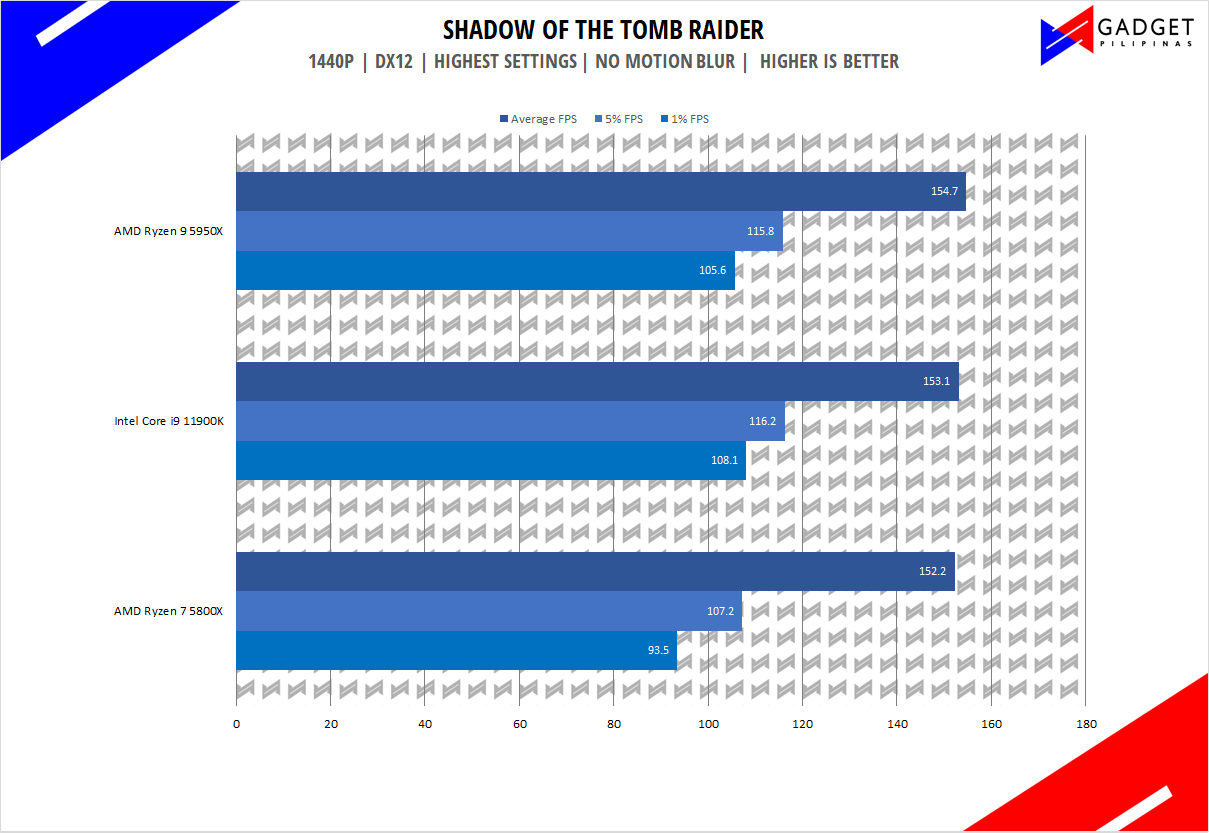
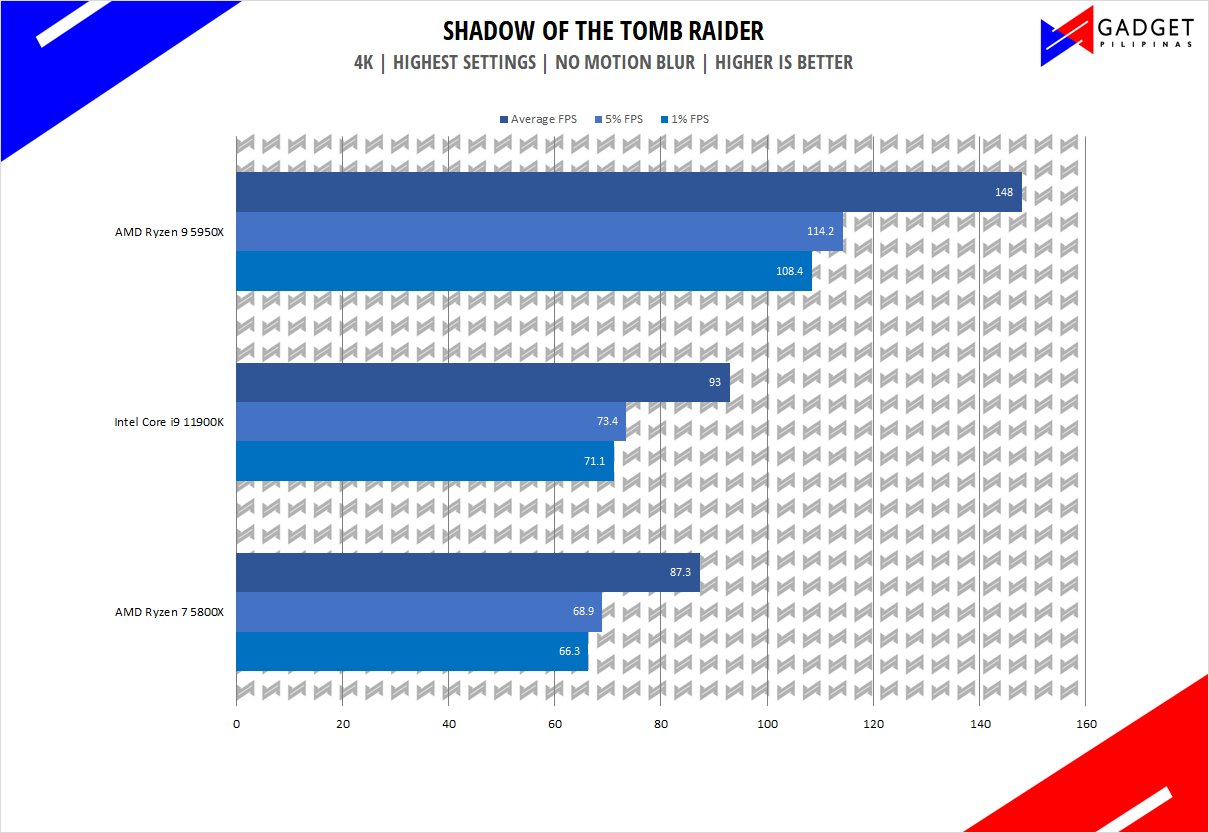 Shadow of The Tomb Raider or SOTR is the latest installment of the Lara Croft Tomb Raider franchise. Developed by Square Enix, SOTR uses the Foundation engine and is further enhanced by Eidos Montreal. STOR is also one of the first games to come out with Ray Tracing and DLSS support.
Shadow of The Tomb Raider or SOTR is the latest installment of the Lara Croft Tomb Raider franchise. Developed by Square Enix, SOTR uses the Foundation engine and is further enhanced by Eidos Montreal. STOR is also one of the first games to come out with Ray Tracing and DLSS support.
Metro Exodus
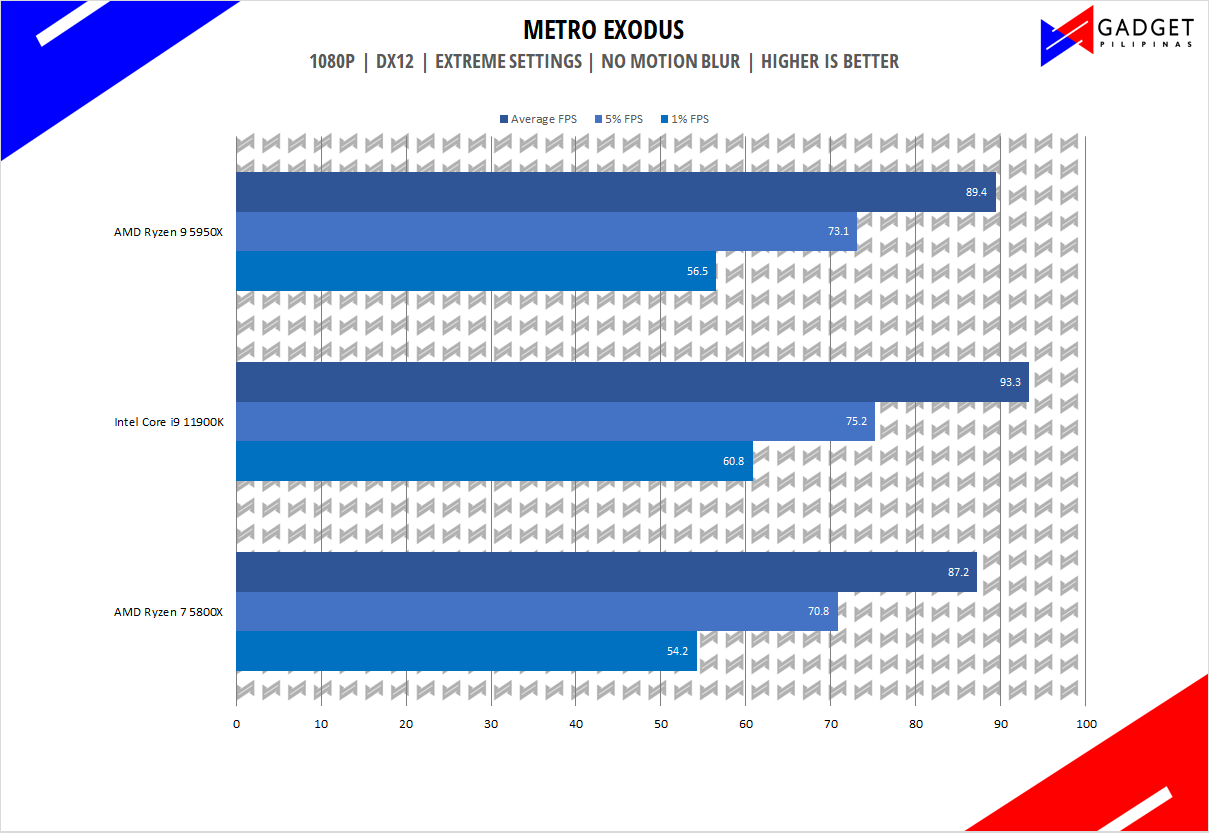
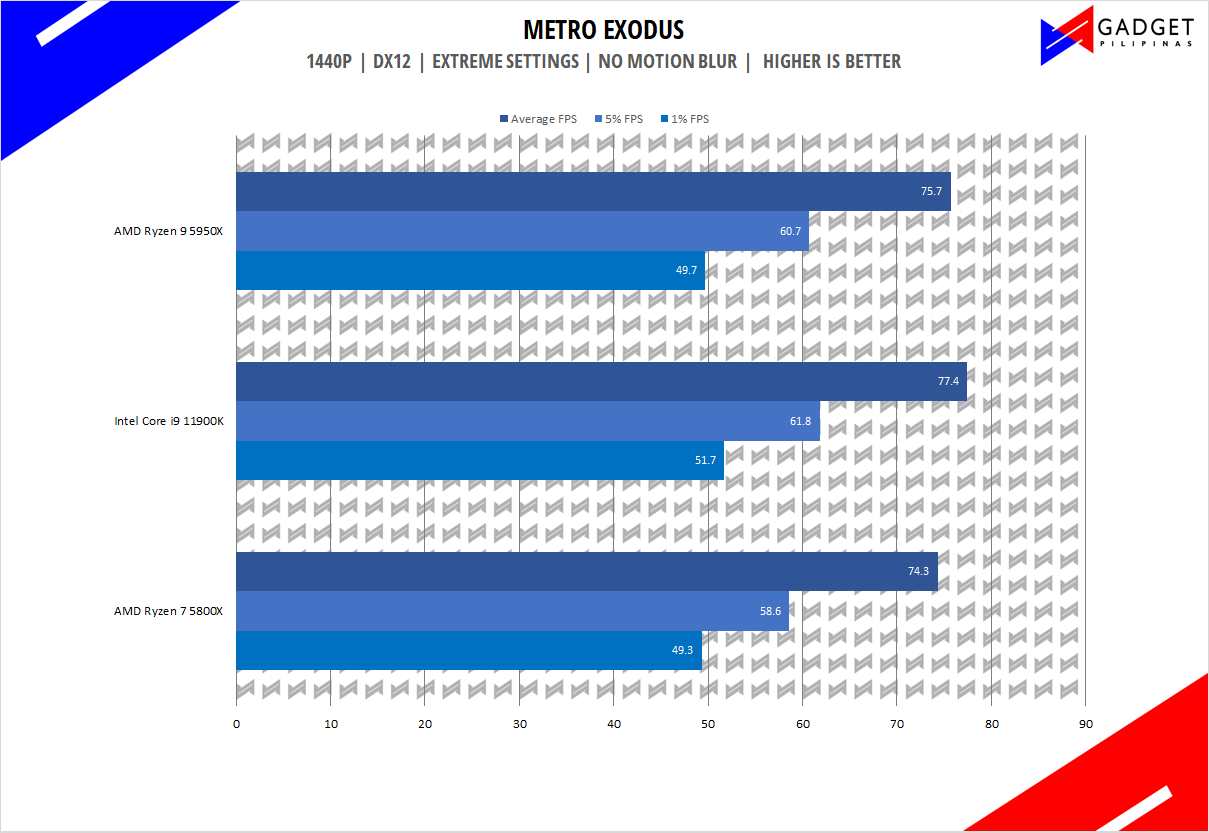
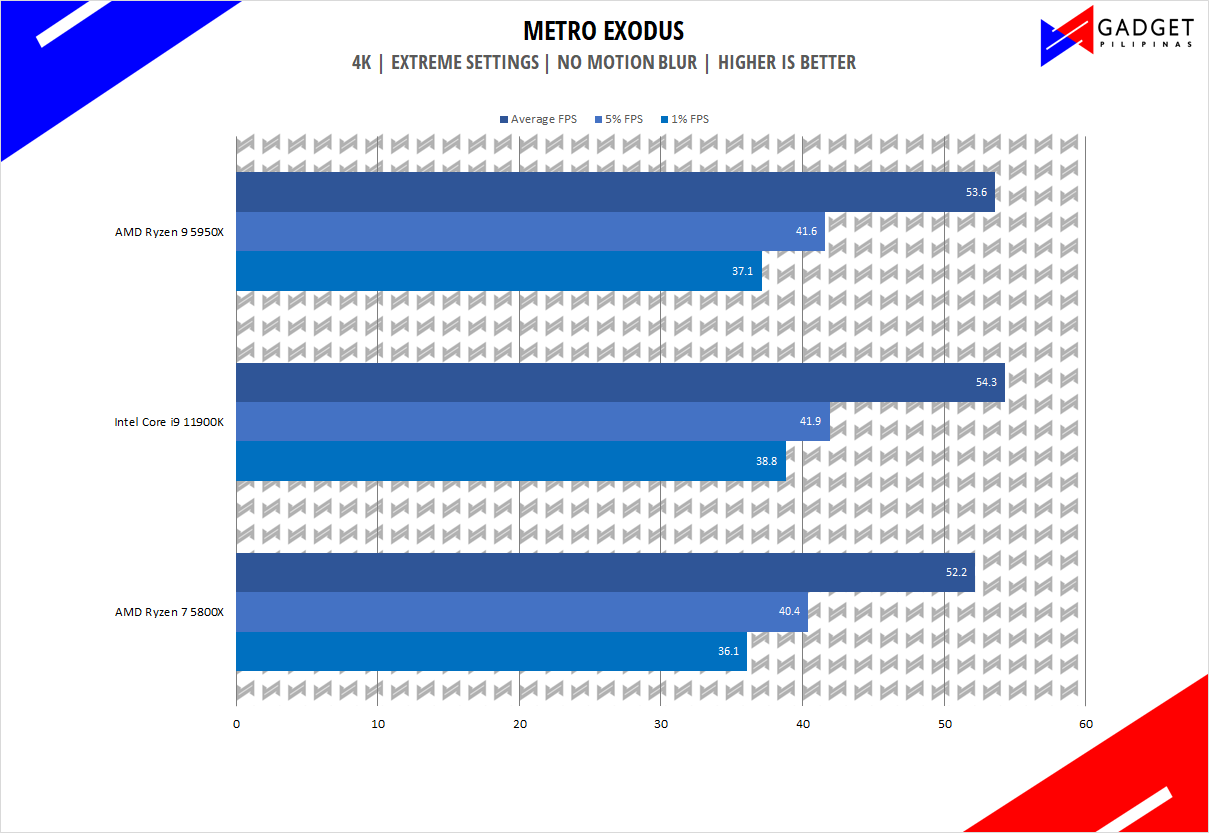 Metro Exodus is the third Metro game trilogy based on Dmitry Glukhovsky’s novels. The game is a first-person shooter with survival horror and stealth elements. The post-apocalyptic game is using 4A Engine by 4A games. Released last 2019, Metro Exodus remains to be one of the most graphically pleasing and demanding games that’s popular to date.
Metro Exodus is the third Metro game trilogy based on Dmitry Glukhovsky’s novels. The game is a first-person shooter with survival horror and stealth elements. The post-apocalyptic game is using 4A Engine by 4A games. Released last 2019, Metro Exodus remains to be one of the most graphically pleasing and demanding games that’s popular to date.
Assassin’s Creed: Odyssey
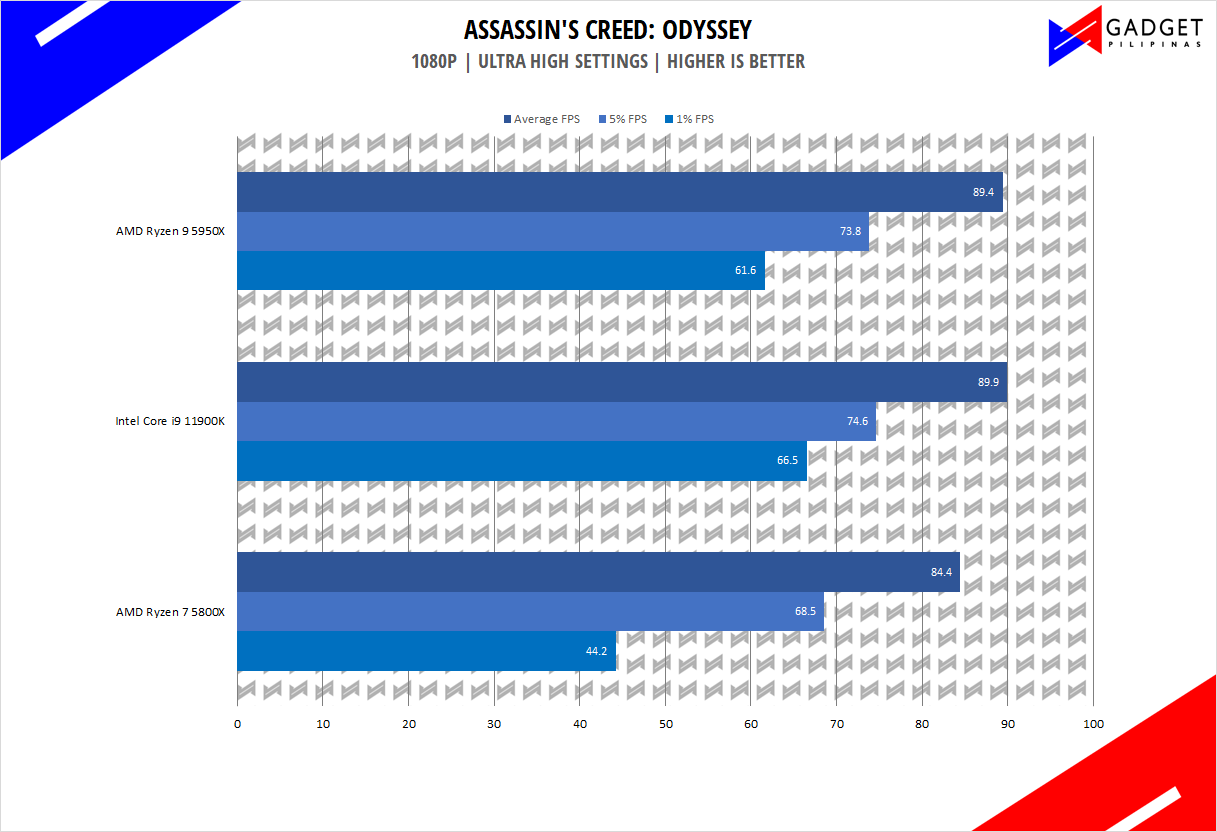
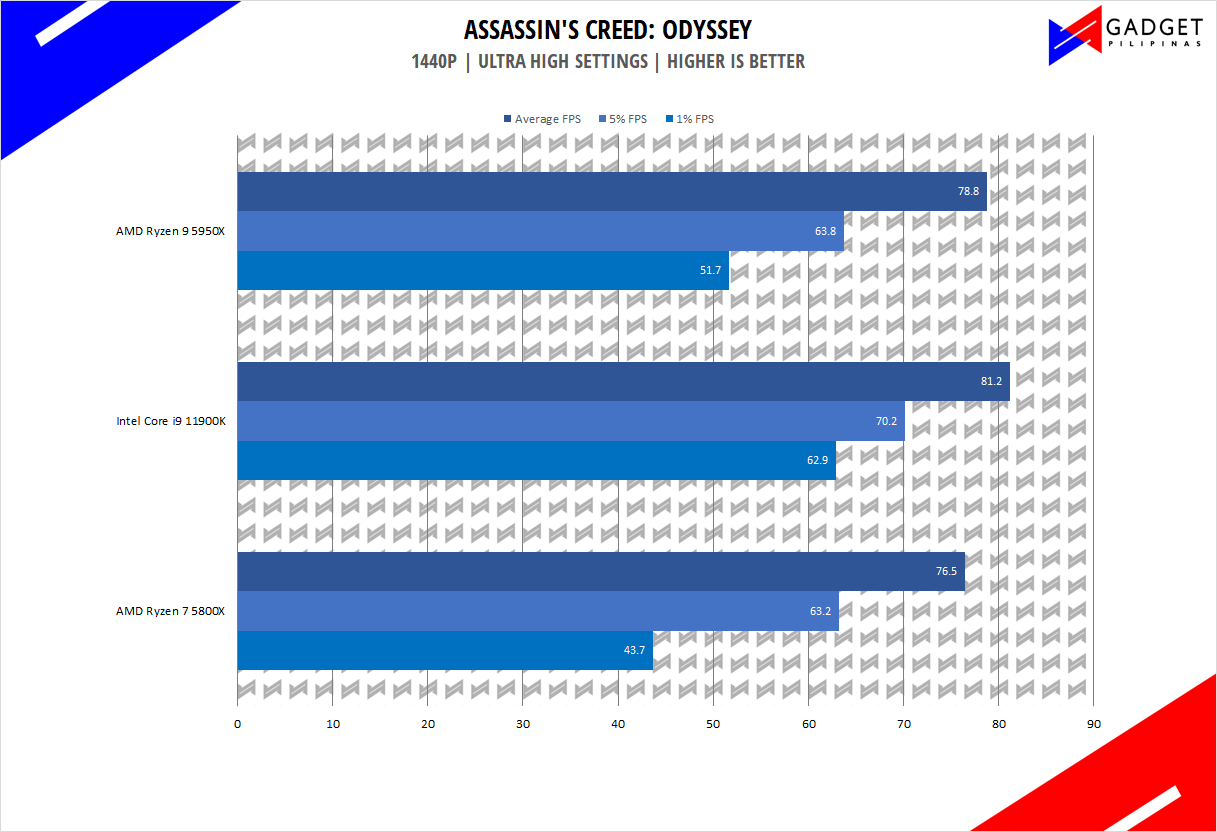
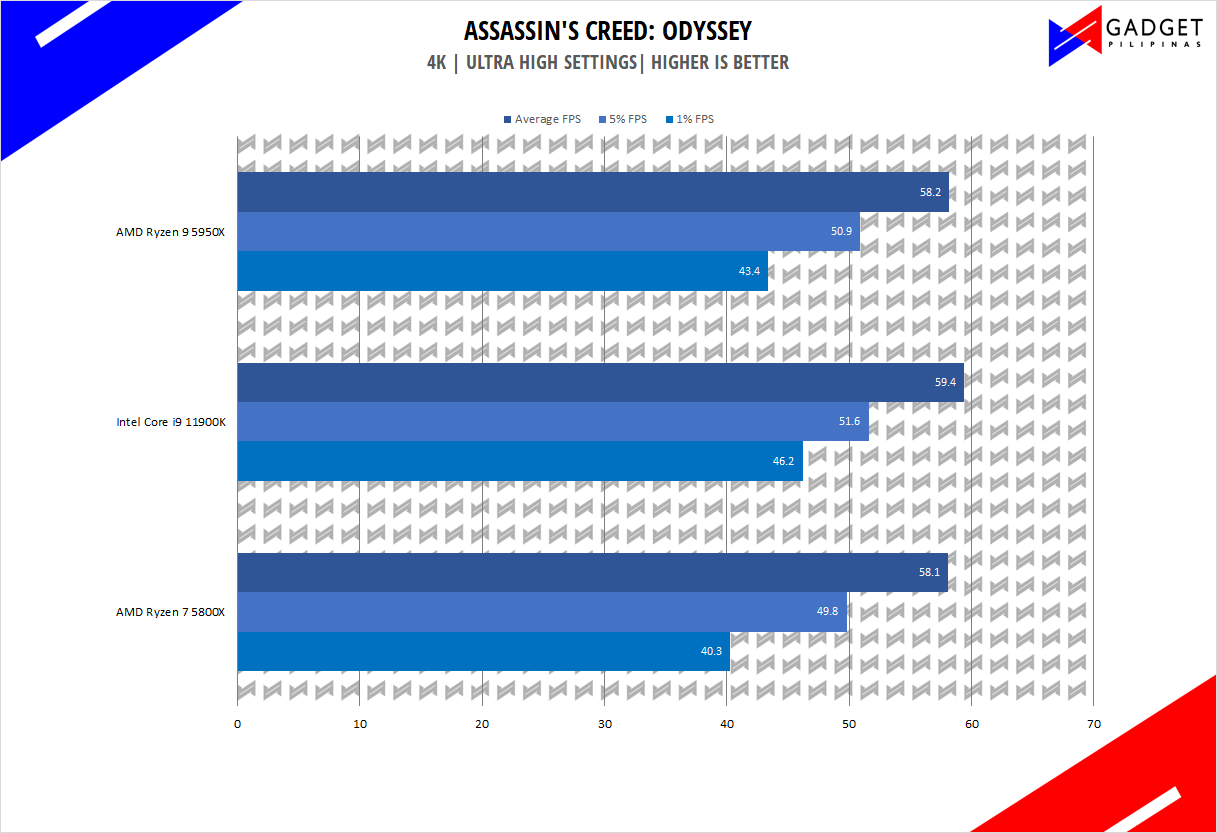 Assassin’s Creed Odyssey is the latest franchise installment from Ubisoft. It’s by far the most popular and stable Assassin’s Creed title since AC IV: Black Flag. It uses the AnvilNext 2.0 game engine, an updated version of Rainbow Six Siege’s game engine, and uses the DirectX 12 API.
Assassin’s Creed Odyssey is the latest franchise installment from Ubisoft. It’s by far the most popular and stable Assassin’s Creed title since AC IV: Black Flag. It uses the AnvilNext 2.0 game engine, an updated version of Rainbow Six Siege’s game engine, and uses the DirectX 12 API.
F1 2020
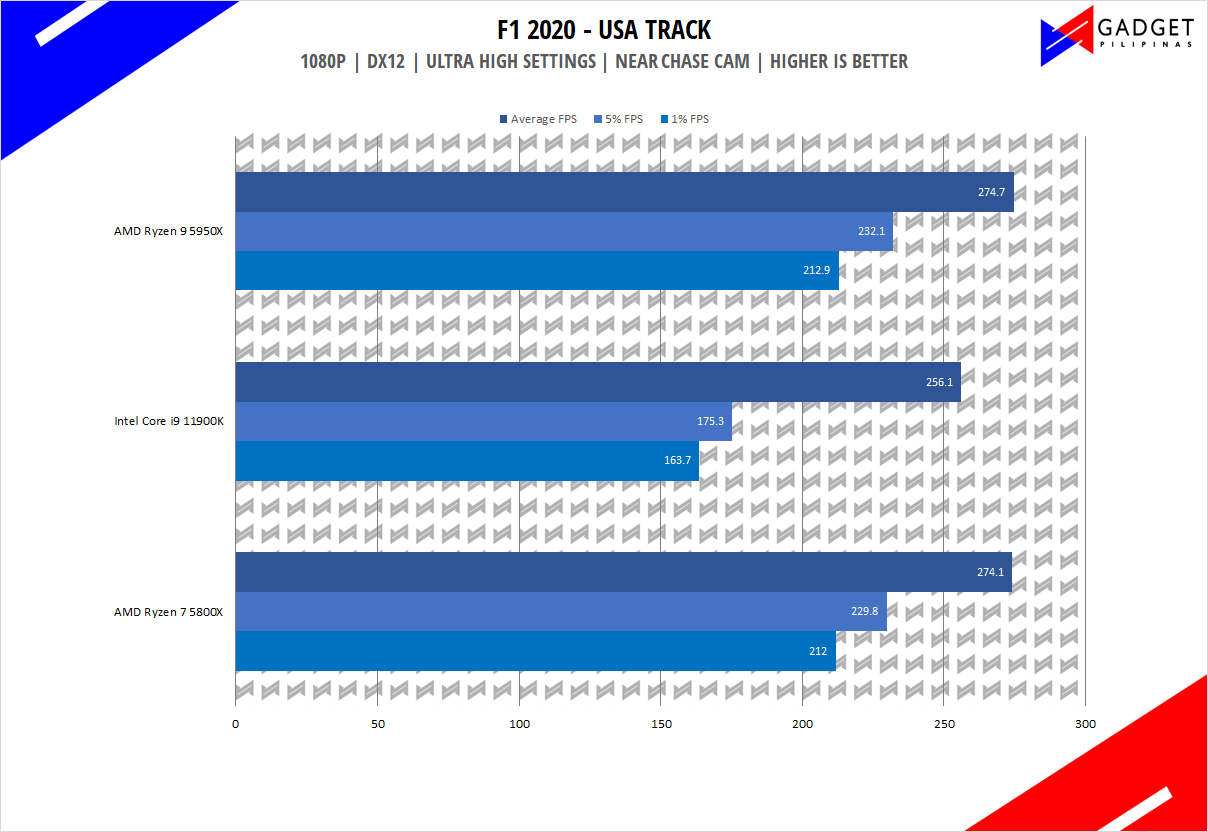
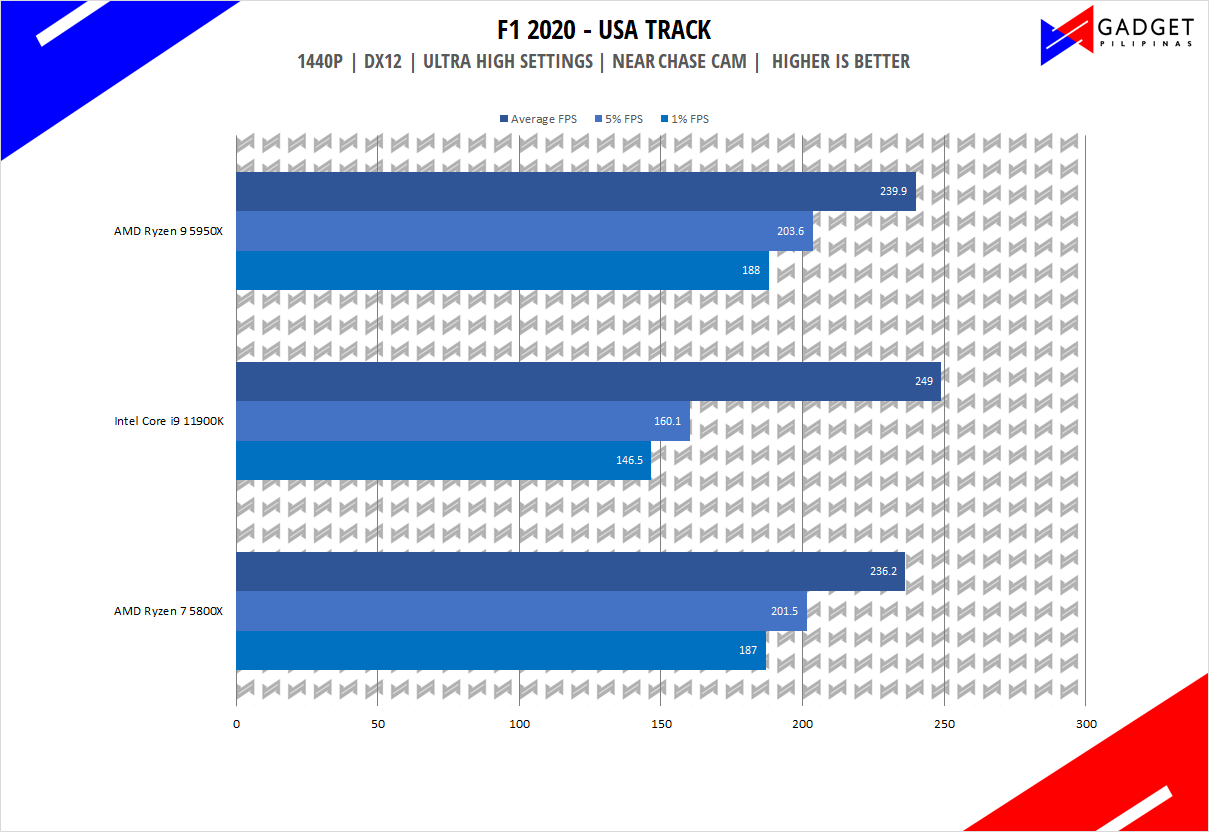
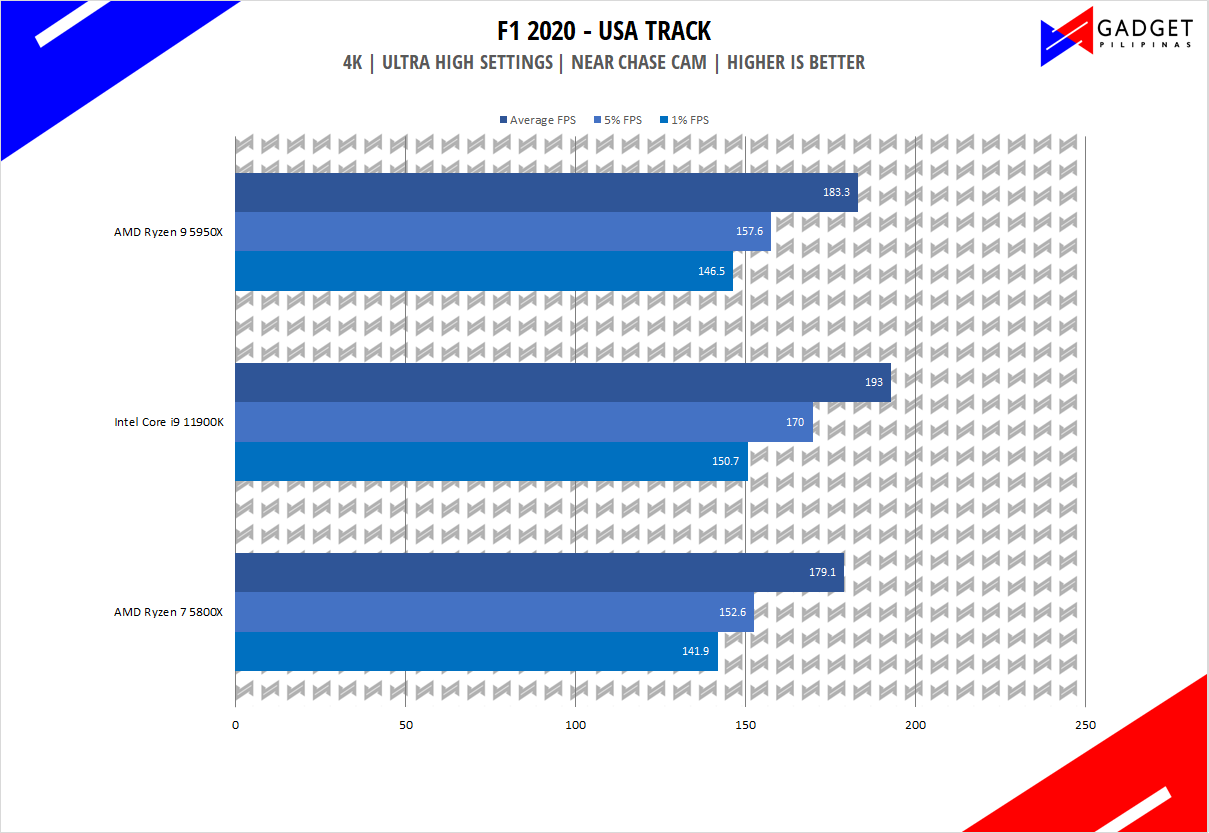 F1 2020 is the official video game of the 2020 Formula 1 and Formula 2 championships developed by Codemasters. F1 2020 is the twelfth installment in the franchise and uses the Ego Engine 3.0. F1 2020 is a good representation of racing games thanks to its realistic graphics and fairly demanding spec requirements.
F1 2020 is the official video game of the 2020 Formula 1 and Formula 2 championships developed by Codemasters. F1 2020 is the twelfth installment in the franchise and uses the Ego Engine 3.0. F1 2020 is a good representation of racing games thanks to its realistic graphics and fairly demanding spec requirements.
GOD FALL
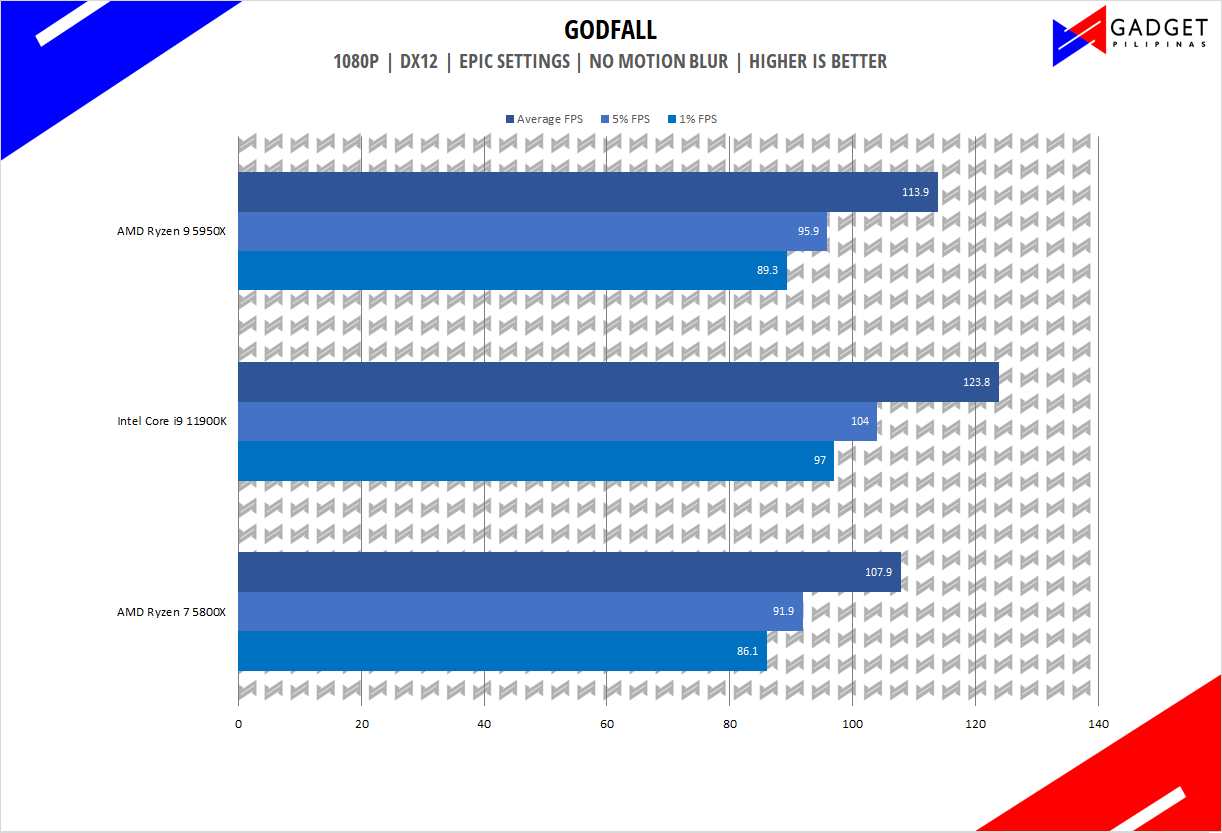
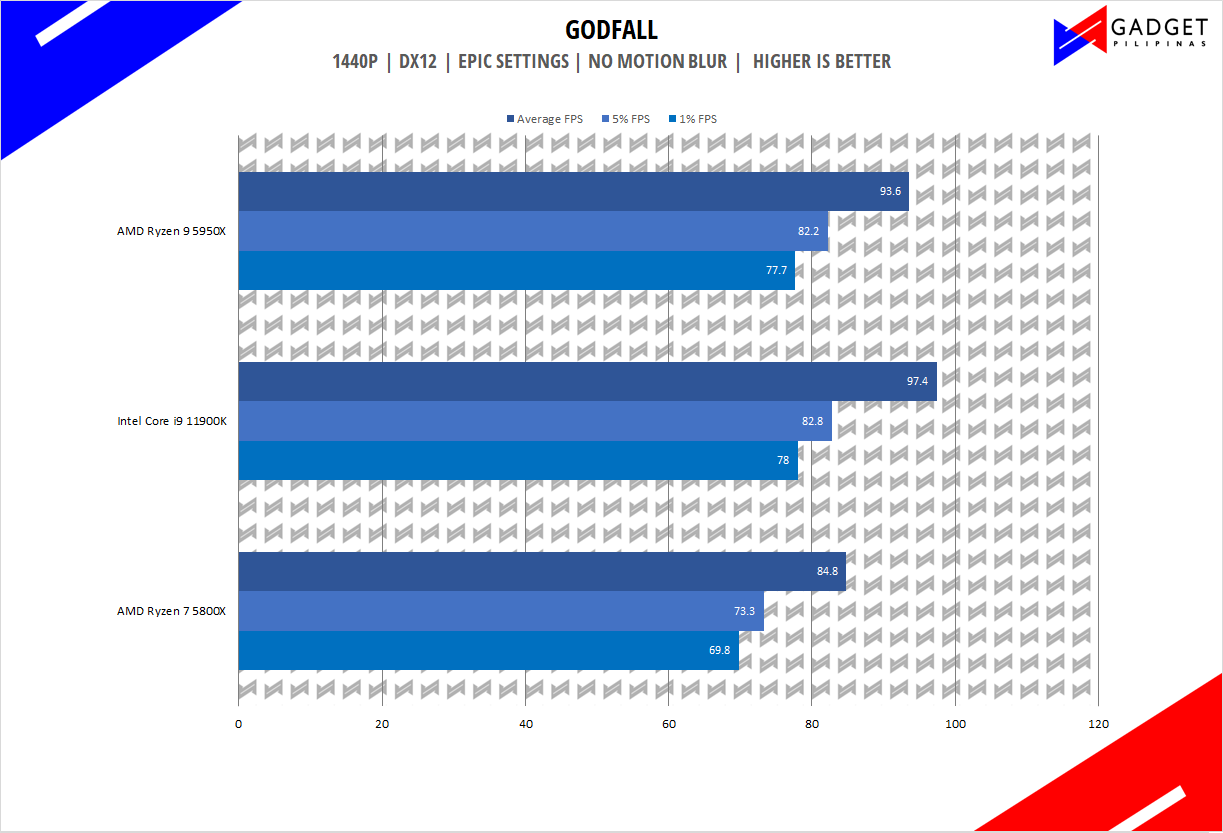
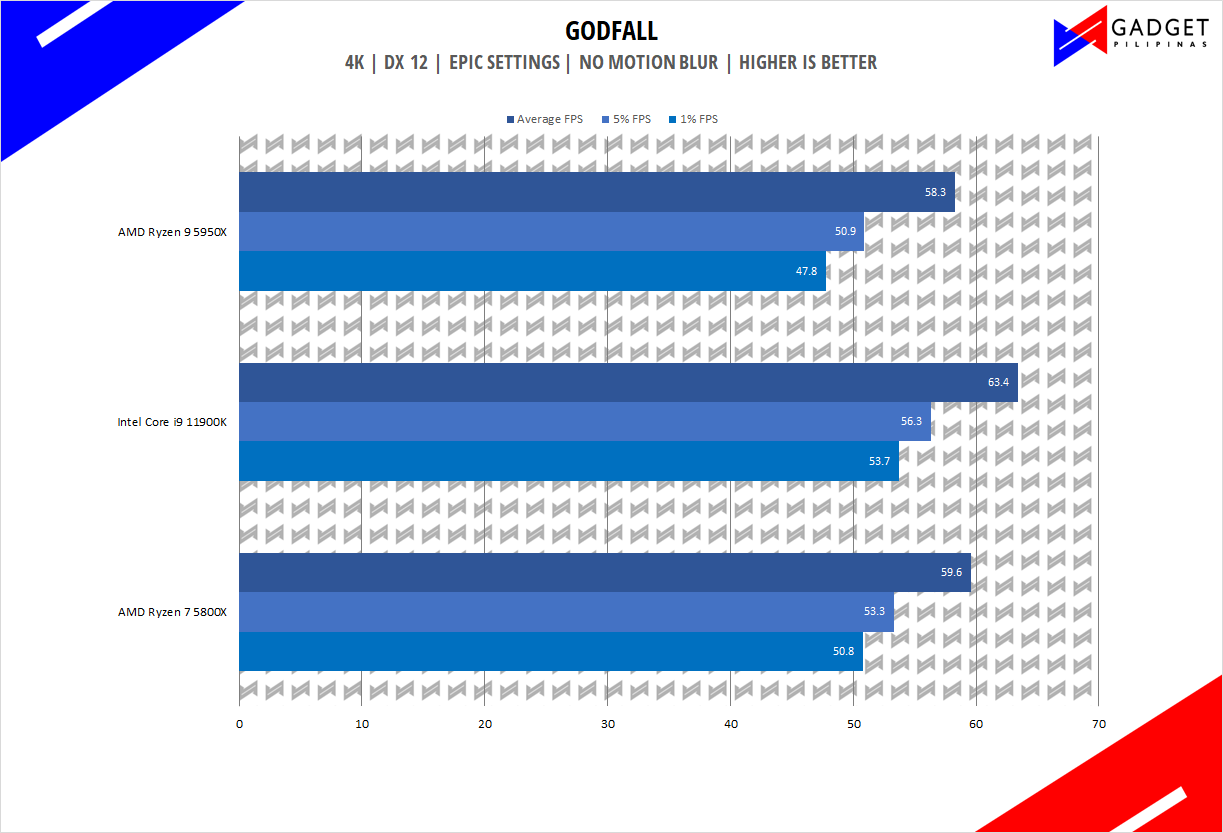 God Fall, developed by Counterplay Games is an action RPG that was one of the first titles to support Vulkan Ray Tracing making it a great addition to our benchmark suite. Godfall is running on Unreal Engine 4. As of writing, Ray Tracing on Godfall is currently exclusive to AMD 6000 series video cards.
God Fall, developed by Counterplay Games is an action RPG that was one of the first titles to support Vulkan Ray Tracing making it a great addition to our benchmark suite. Godfall is running on Unreal Engine 4. As of writing, Ray Tracing on Godfall is currently exclusive to AMD 6000 series video cards.
Performance Summary
The superiority of the Core i9 11900K’s single-core performance is witnessed on our 1080p benchmarks as it tends to draw closer to the 16-core Ryzen 9 5950X rather than the similar core setup of the Ryzen 7 5800X. However, as the resolution increases, the gap closes between the Ryzen 7 5800X and i9 11900K as more cores are utilized to the point where the 11900K barely wins by 5% FPS in older titles. Games that are DirectX 12 enabled, particularly those that utilize more cores efficiently favors the Ryzen 5000 series processors.
Intel Core i9 11900K Temps and Power Draw
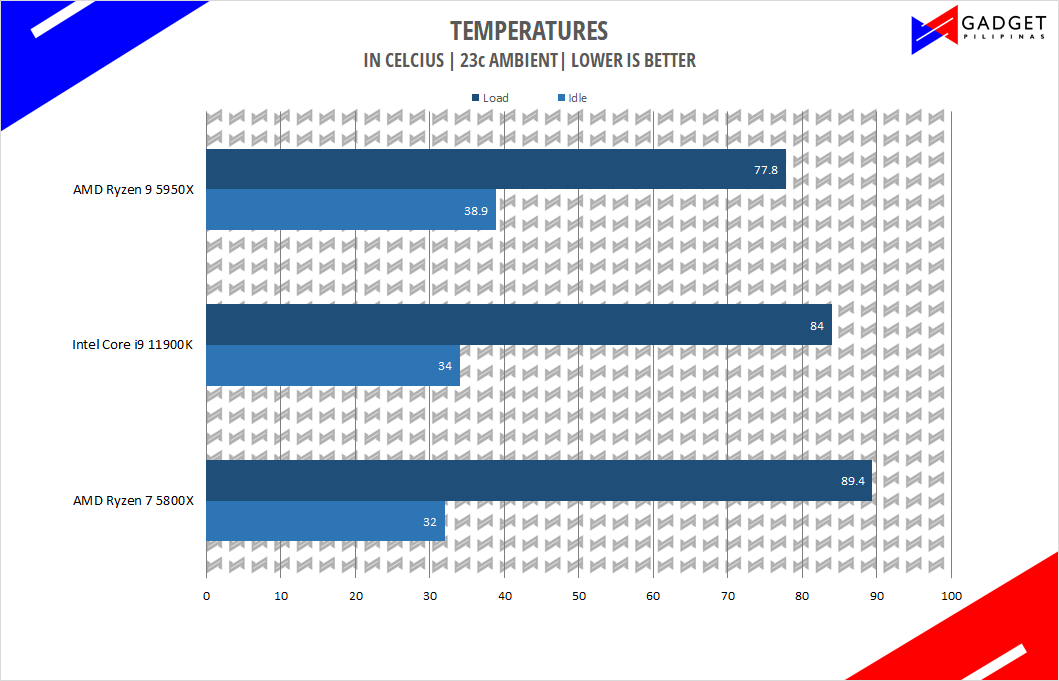 During our benchmark run, the Intel Core i9 11900k ran at a peak temp of 84°C with a relatively cool idle temp of 24°C. 84°C peak load temp is relatively in between what I consider cool and hot for a processor running stock clocks.
During our benchmark run, the Intel Core i9 11900k ran at a peak temp of 84°C with a relatively cool idle temp of 24°C. 84°C peak load temp is relatively in between what I consider cool and hot for a processor running stock clocks.
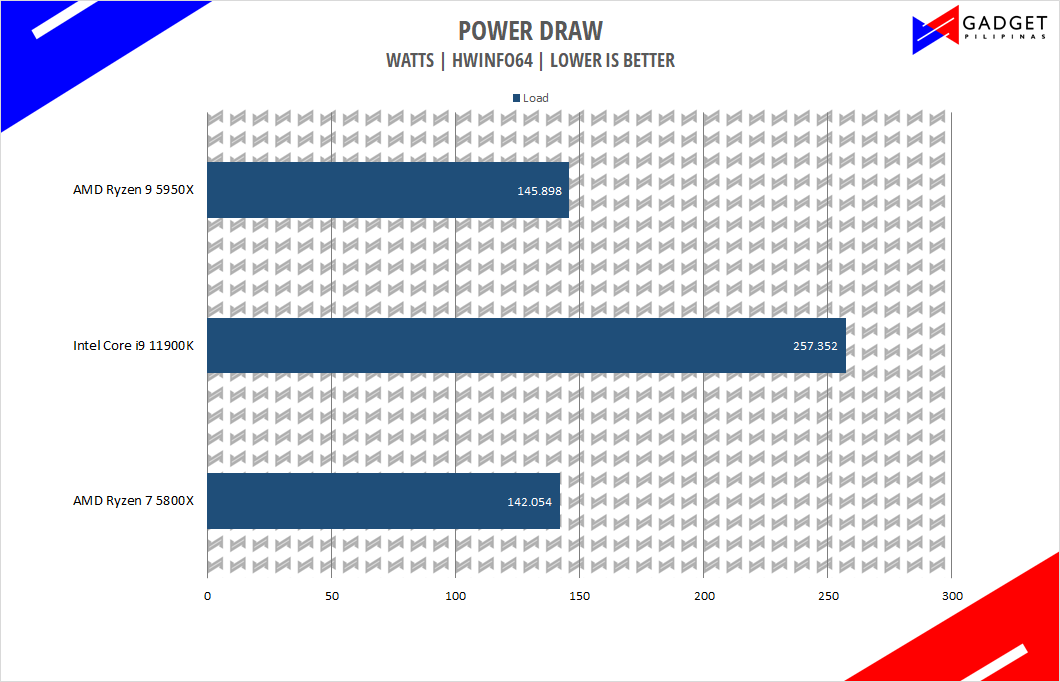 Looking at the recorded power consumption, the 84c peak temp of the Core i9 11900K isn’t really that bad considering its competitor’s wattages. The Core i9 11900K is one power-hungry CPU with a peak recorded consumption of 257watts compared to the 5950X which has double the core count, not to mention the more efficient Ryzen 7 5800X at 142-watts with the same core and thread count.
Looking at the recorded power consumption, the 84c peak temp of the Core i9 11900K isn’t really that bad considering its competitor’s wattages. The Core i9 11900K is one power-hungry CPU with a peak recorded consumption of 257watts compared to the 5950X which has double the core count, not to mention the more efficient Ryzen 7 5800X at 142-watts with the same core and thread count.
Conclusion
All in all, the Intel Core i9-11900K is a great gaming processor with 8-core/16-thread count proving to be more than enough for gaming, especially on 1080p and 1440p. Its single-core and gaming performance manages to surpass the Ryzen 7 5800X, especially in titles where core count doesn’t matter as much. The 11th-generation Core i9 11900k basically addresses the biggest downside of its predecessor which is productivity. In some cases, the 11900k beats the 5800X particularly in short workloads that take advantage of the Thermal Velocity Boost and All-core turbo. However, the Ryzen 9 5950X still takes the crown thanks to its higher core count.
Is the i9 11900K worth the upgrade?
That said, we still stand by with our words that the Intel Core i9 11900K is a “great” processor. What makes it great is its pricing. Priced at Php 32,000, the i9 11900K sits in between the 5800X and 5900X. The Php 2,000 premium over the Ryzen 7 5800X is attributed to superior single-threaded performance, gaming, and in some cases, productivity. Frankly, the Intel Core i9 11900K serves as a great alternative for the currently rare Ryzen 5000 series CPUs provided you’re not coming from an Intel 10th gen Ryzen 3000 series processor. So, if you’re looking to upgrade your dated CPU with gaming as your priority but you’re not closing the idea of doing productivity-related tasks such as streaming or editing, then the Core i9 11900K is the processor you should consider buying.
Grant is a Financial Management graduate from UST. His passion for gadgets and tech crossed him over in the industry where he could apply his knowledge as an enthusiast and in-depth analytic skills as a Finance Major. His passion allows him to earn at the same time help Gadget Pilipinas' readers in making smart, value-based decisions and purchases with his reviews and guides.

